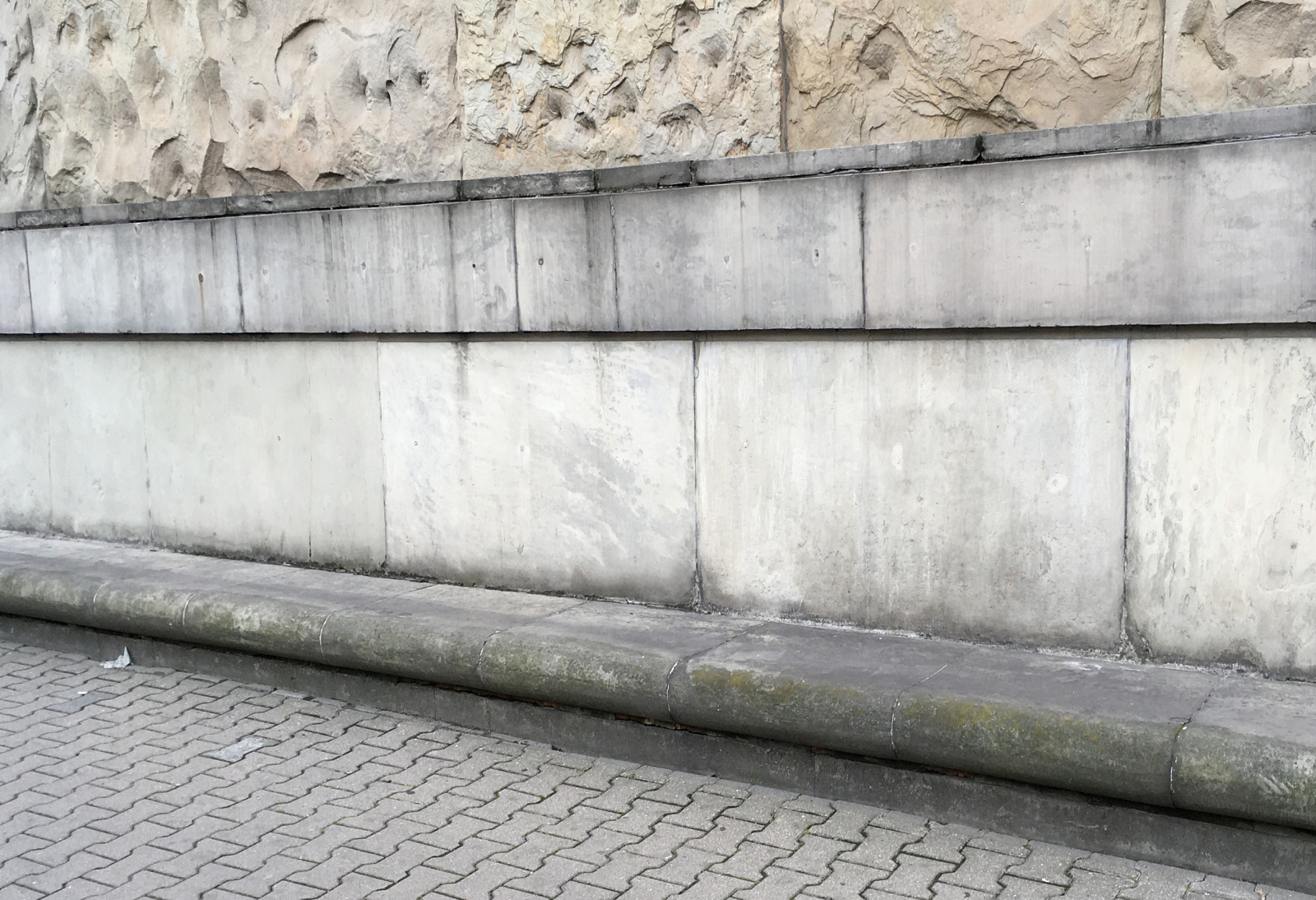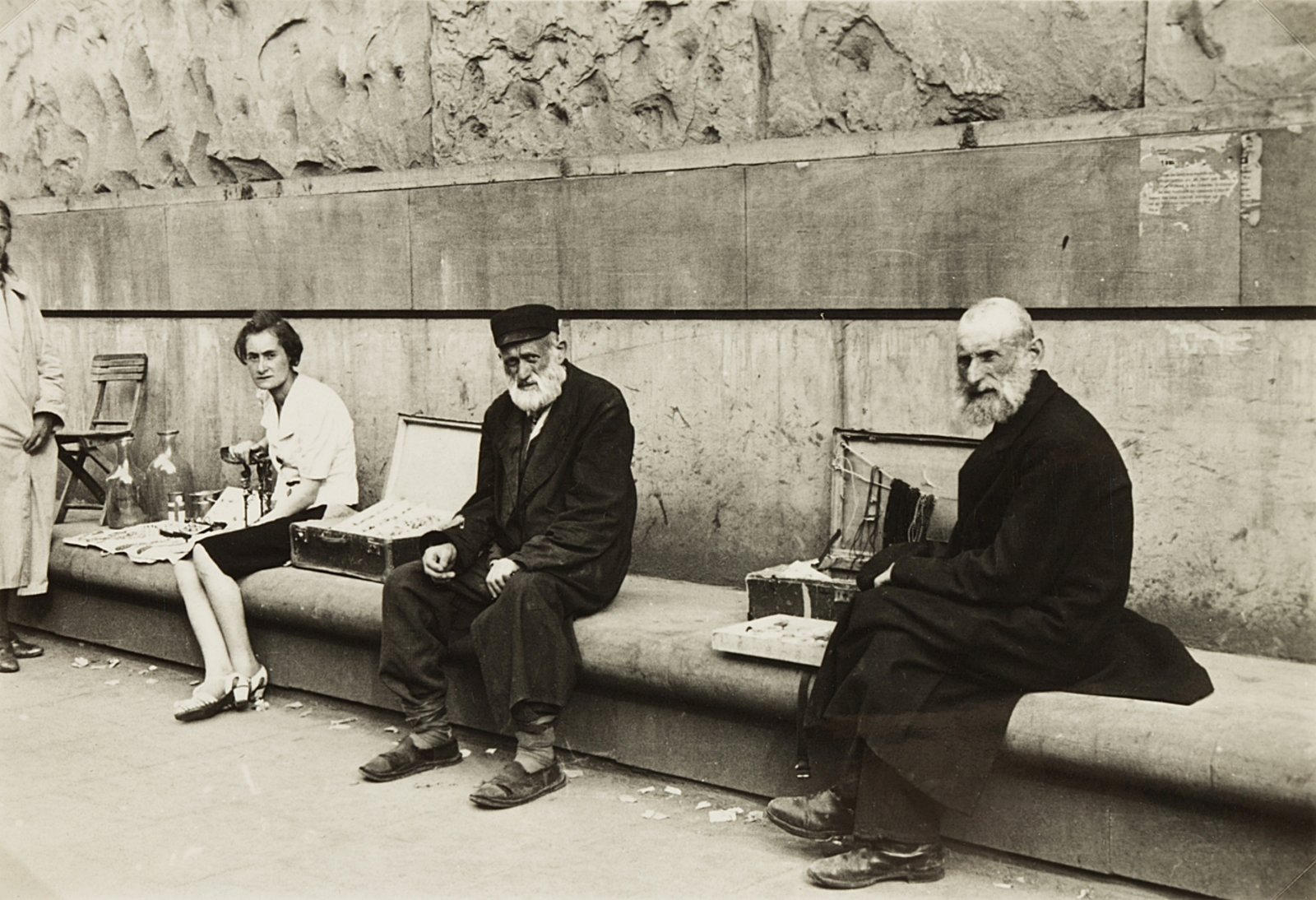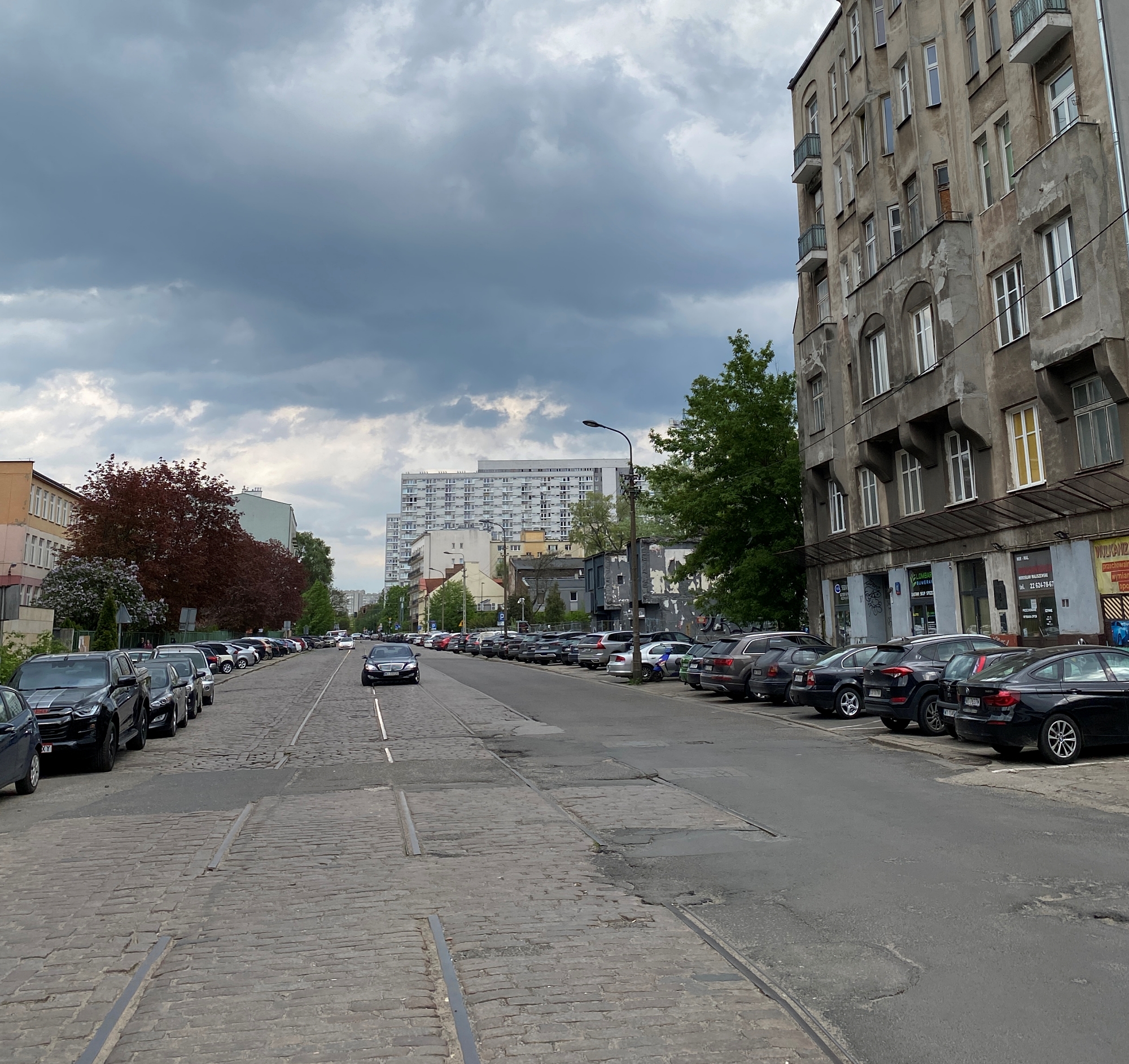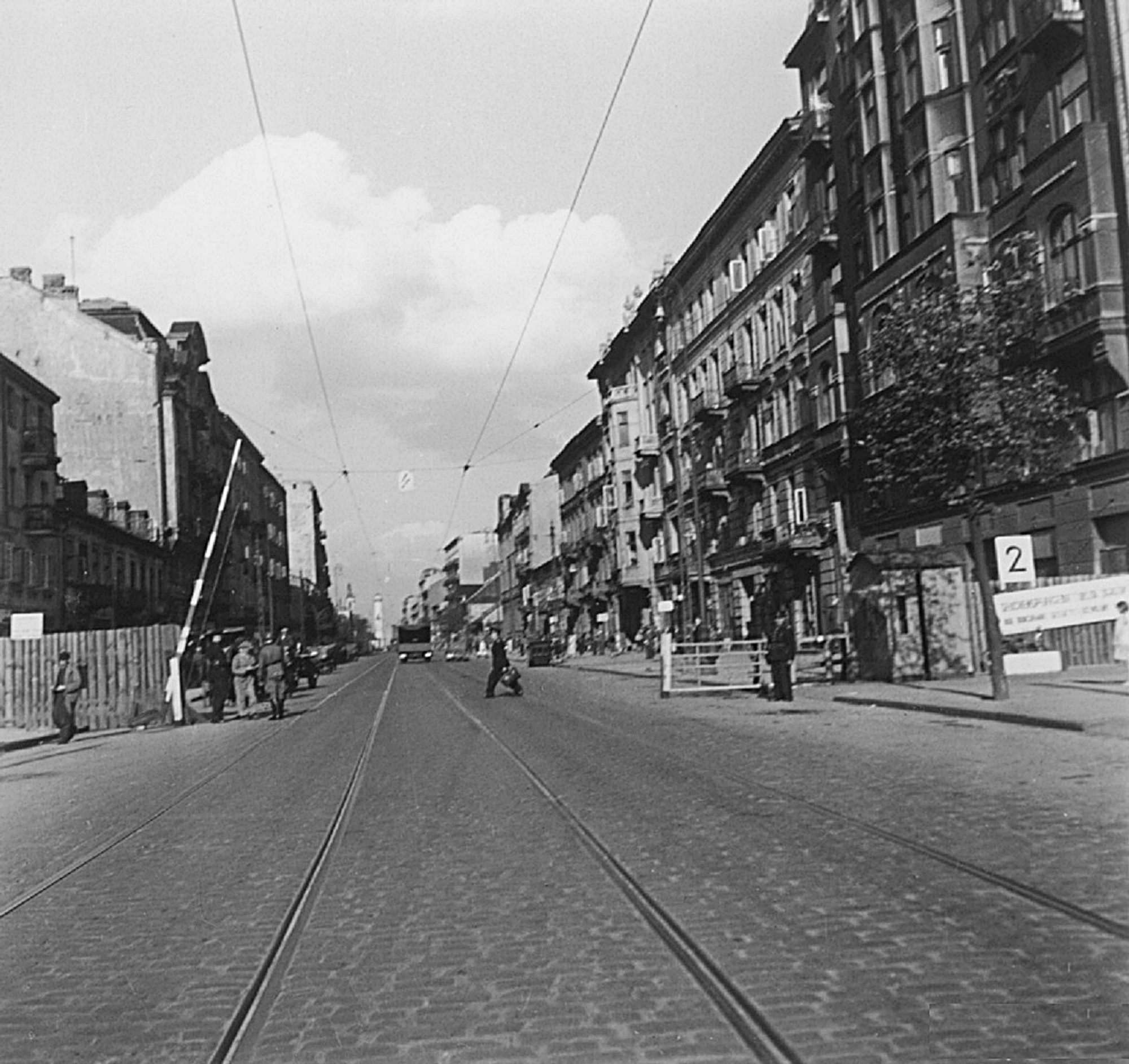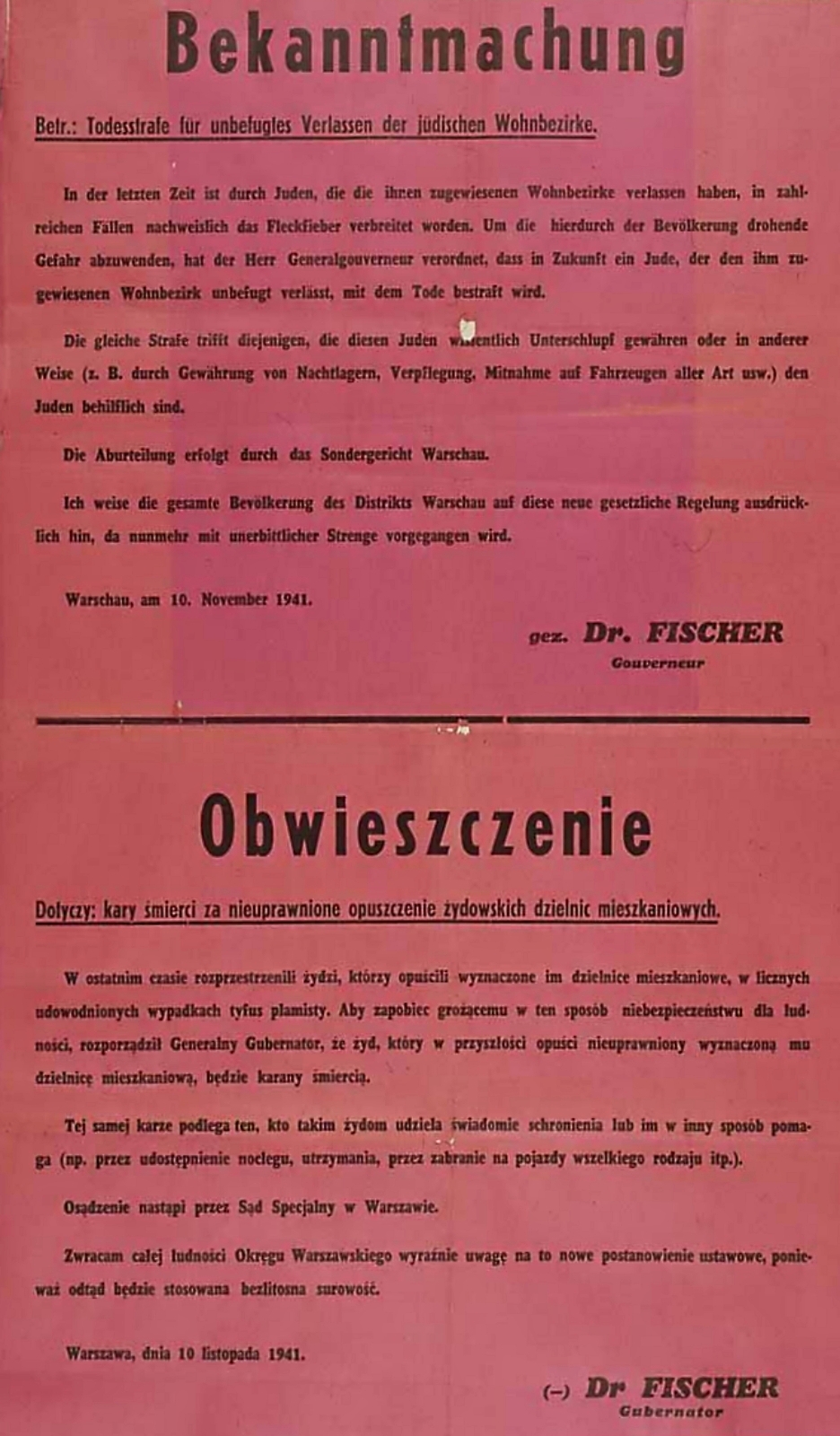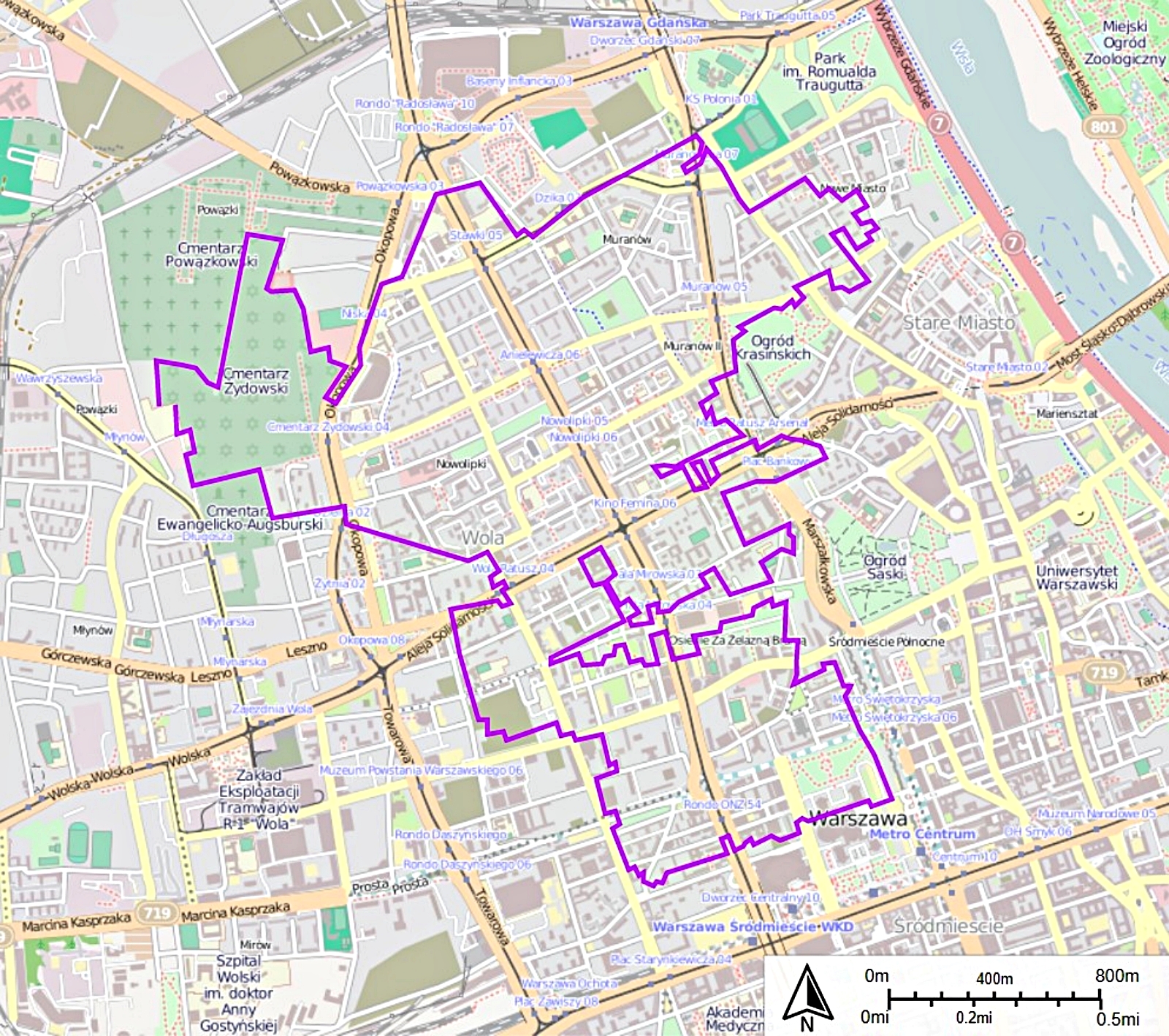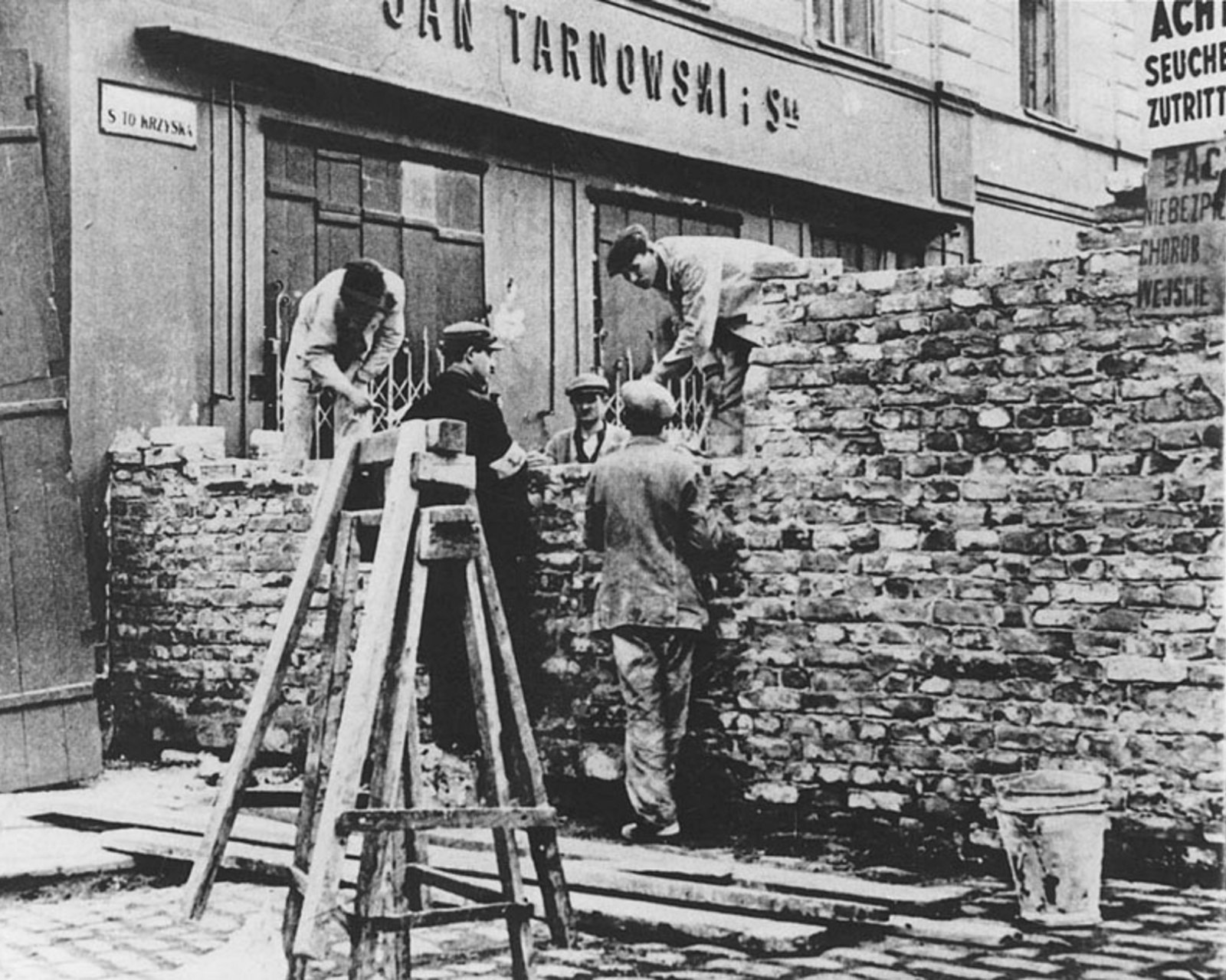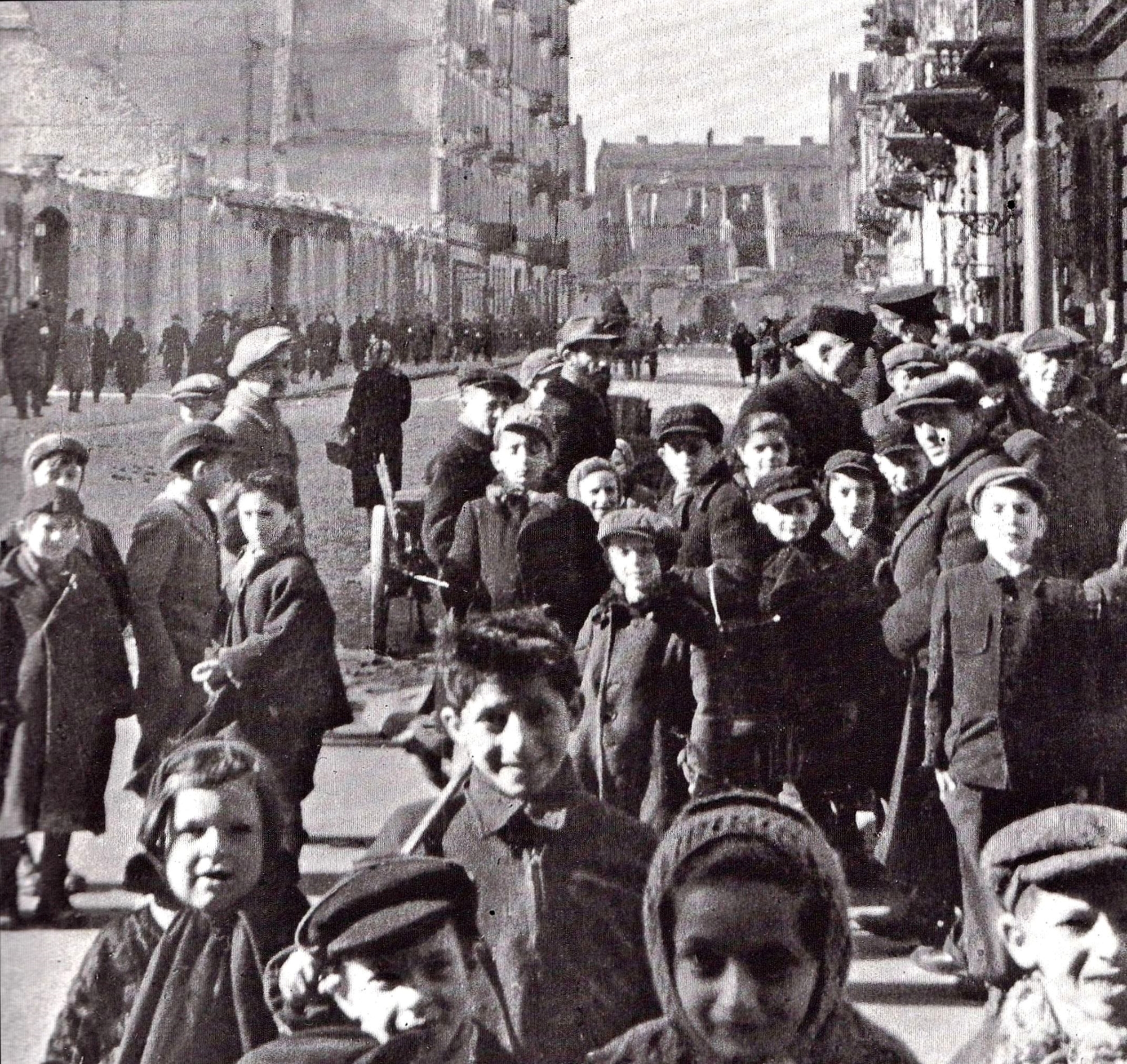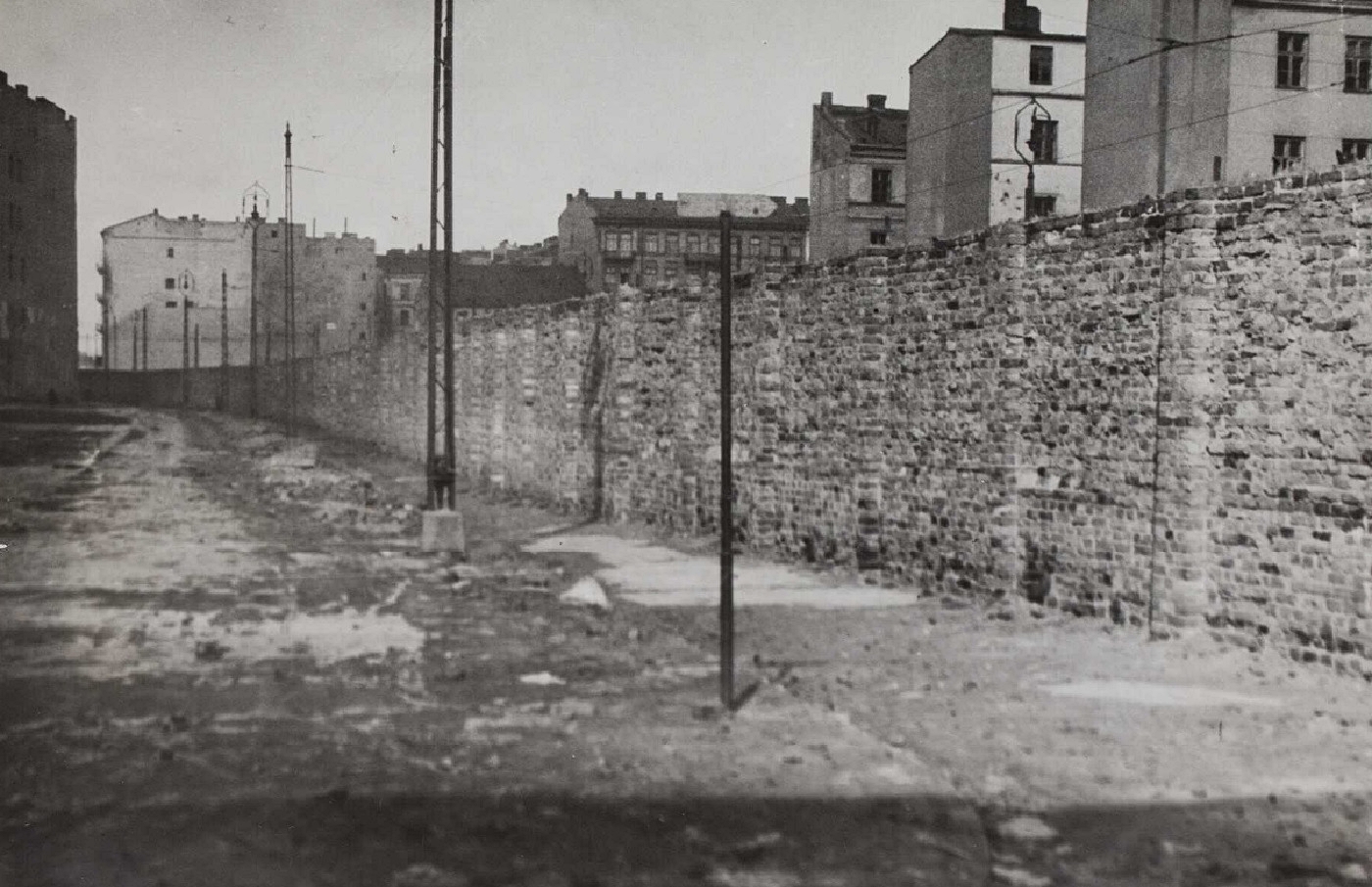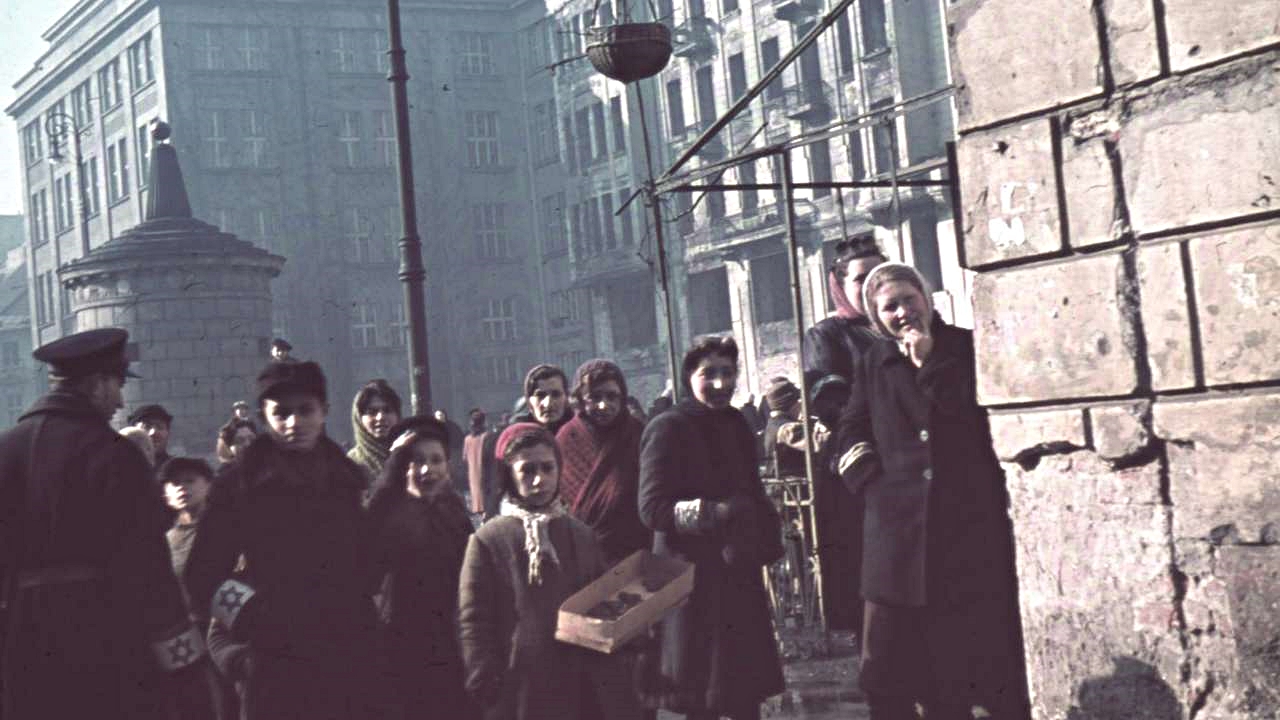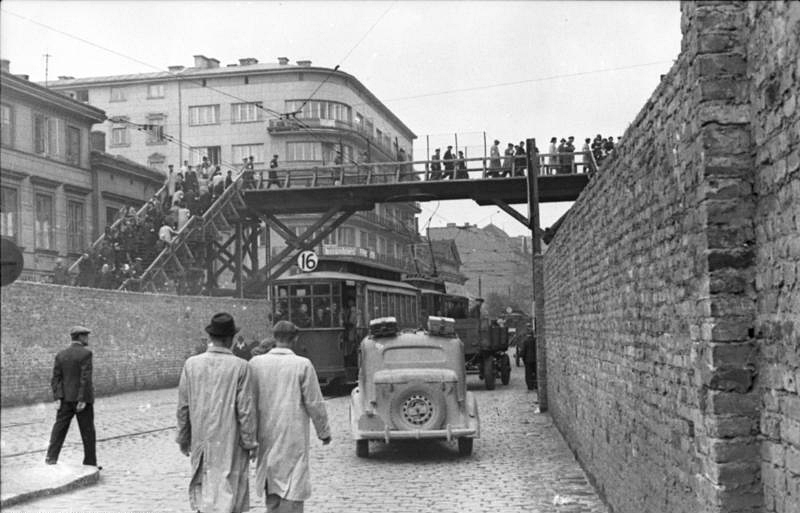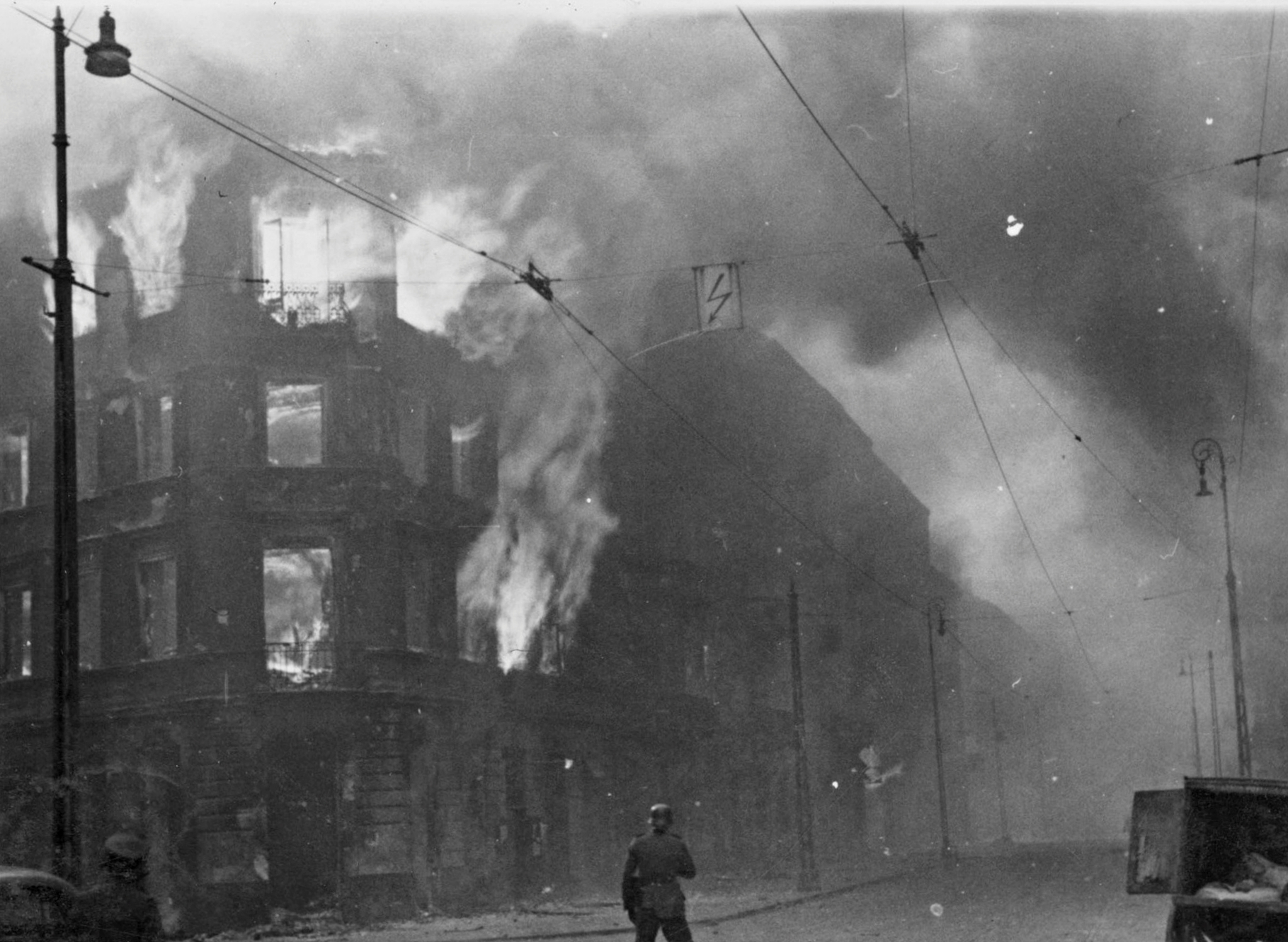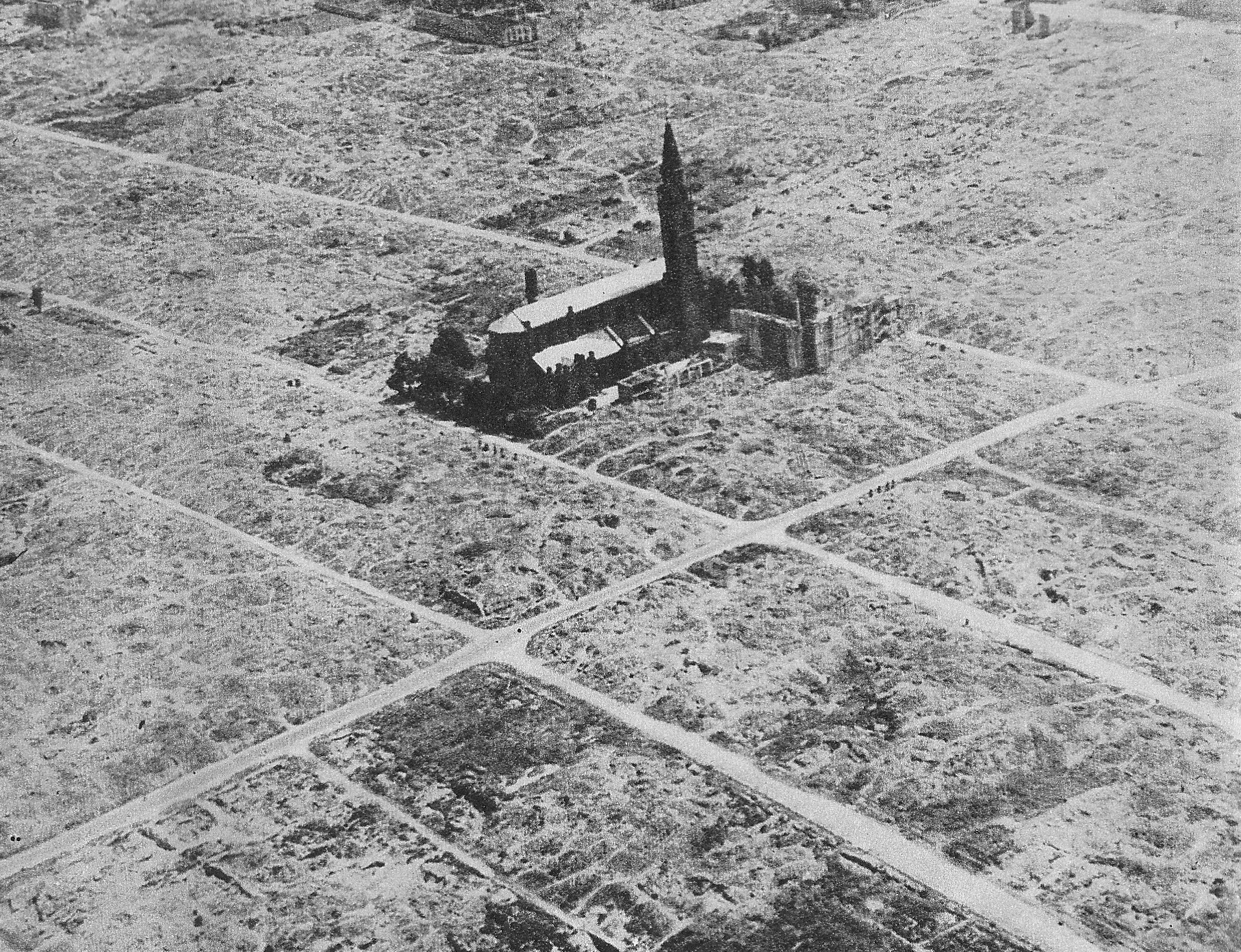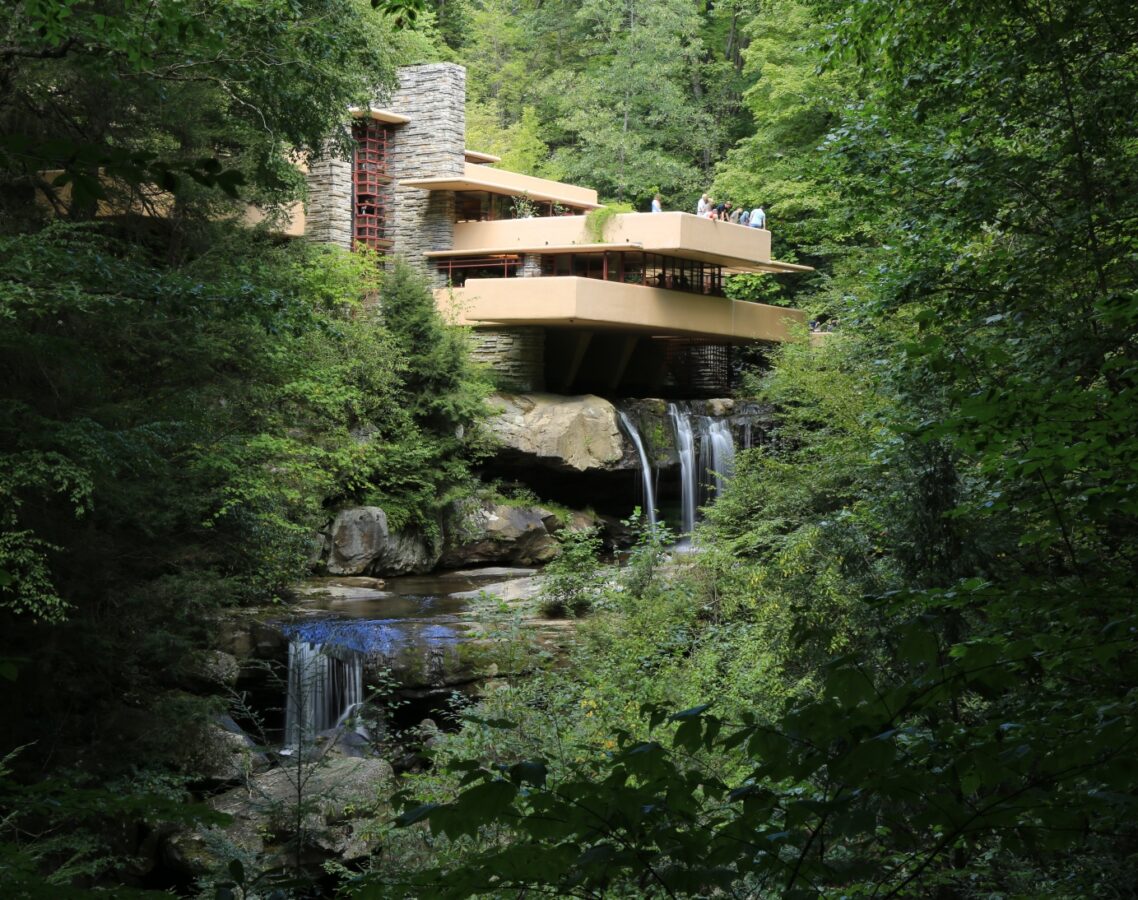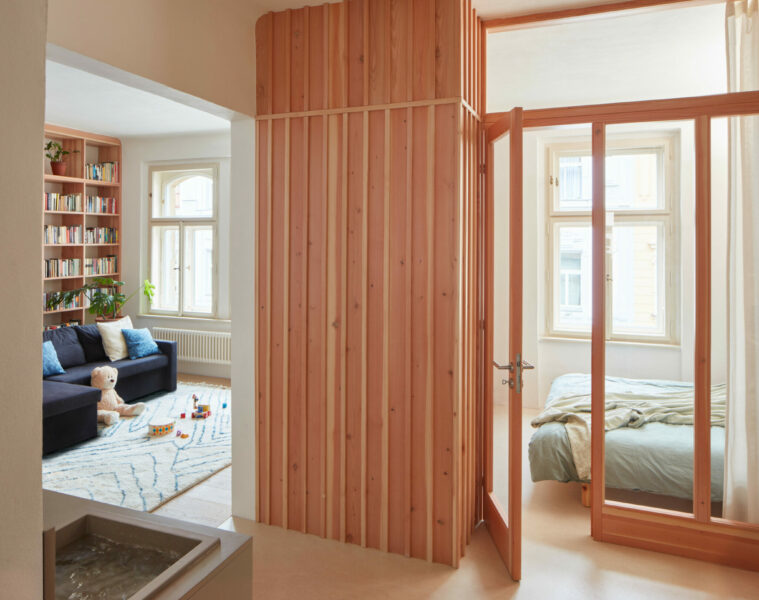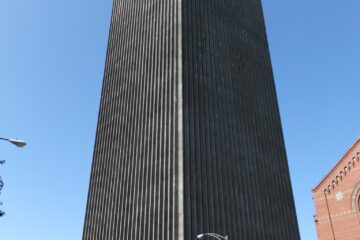Warsaw’s history is inextricably linked with the history of its Jewish community. At the outbreak of the Second World War, the capital was inhabited by almost 360,000 Jews, which accounted for one third of the city’s total population. In October 1940, the three-metre-high walls of the ghetto divided the capital. These were supposedly to protect the rest of Warsaw’s population from epidemics. In reality, this isolation of the district, inhabited mainly by Jews, was an integral part of the Third Reich’s anti-Semitic policy.
In the people trapped behind the wall, the idea of armed resistance was born. on 19 April 1943, two thousand Germans entered the ghetto to finally liquidate it. A few hundred young people opposed them. They stood no chance against the armed Nazis, but preferred to die in battle to save their dignity. After the end of the Second World War, the surviving walls of the enclosed Jewish quarter, along with the buildings, were mostly demolished. Fortunately, the fragments that once formed this boundary between two worlds – the Jewish and the ‘Aryan’ – have survived. Today, on the 81st anniversary of the outbreak of the ghetto uprising, they are a precious and remarkable reminder.
Jewish people being led out of the ghetto. Photo: National Archives at College Park, public domain, via Wikimedia Commons
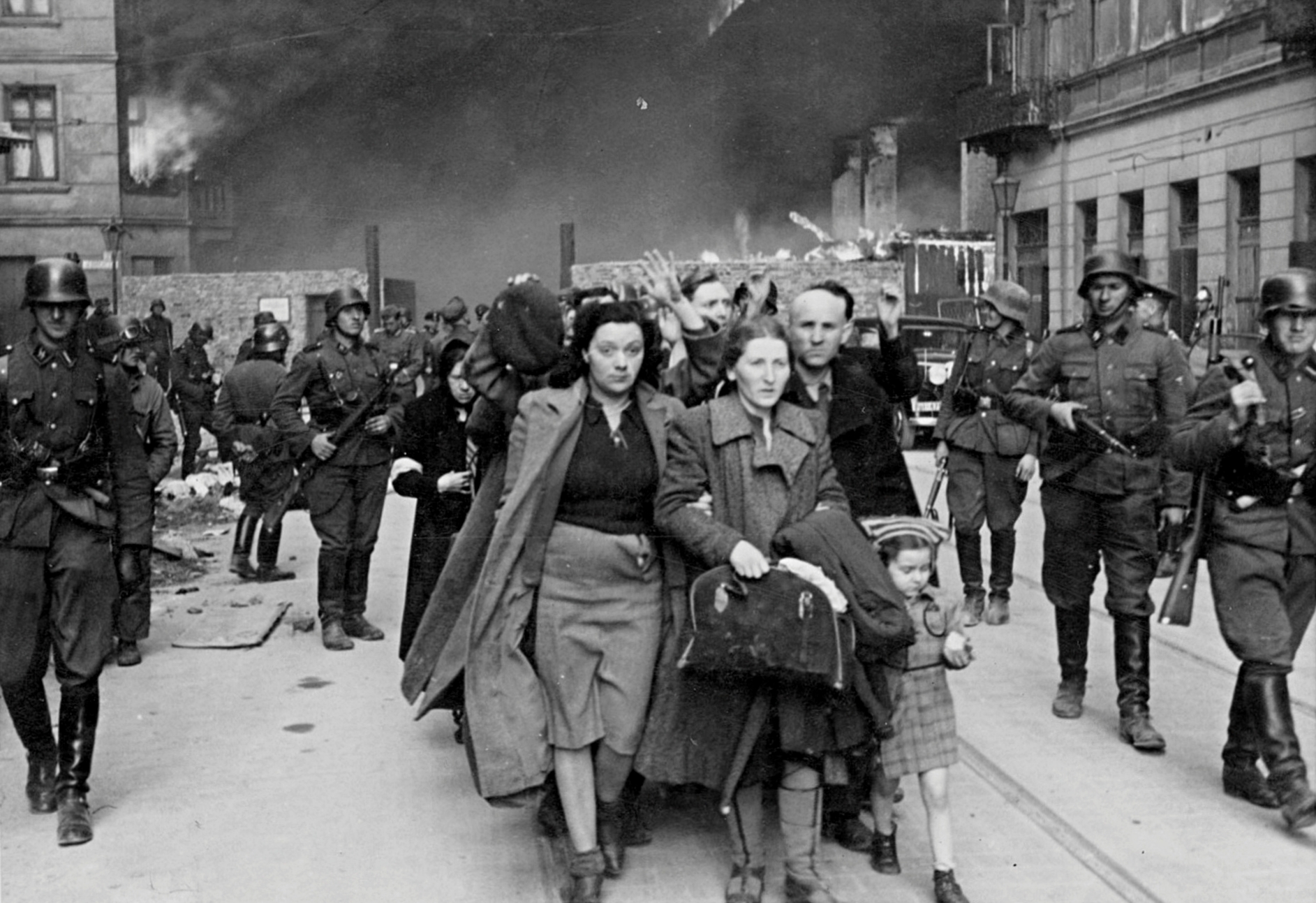
One of the most important surviving remnants of the ghetto can be found in the courtyard of the building standing at 62 Złota St. It is a fragment of the wall of a pre-war building about 6 metres high. The preserved wall marked the area of the so-called “small ghetto”, i.e. the original area of the Jewish quarter between 1940 and 1941. It contains, among other things, a commemorative plaque unveiled on 26 May 1992 by the President of Israel Chaim Herzog during his official visit to Poland, as well as a plan of the Warsaw Ghetto, unveiled on 16 November 2022 in connection with the 82nd anniversary of the closing of the ghetto gates. Individual bricks from this section of the wall have gone to the Yad Vashem Holocaust History Museum in Jerusalem and to museums in Houston and Melbourne. In 1989, through the efforts of Mieczysław Jędruszczak, a fragment of the wall was entered on the list of historical monuments. In front of the entrance to the building’s courtyard, the first Warsaw Memorial Stones were unveiled in July 2023.
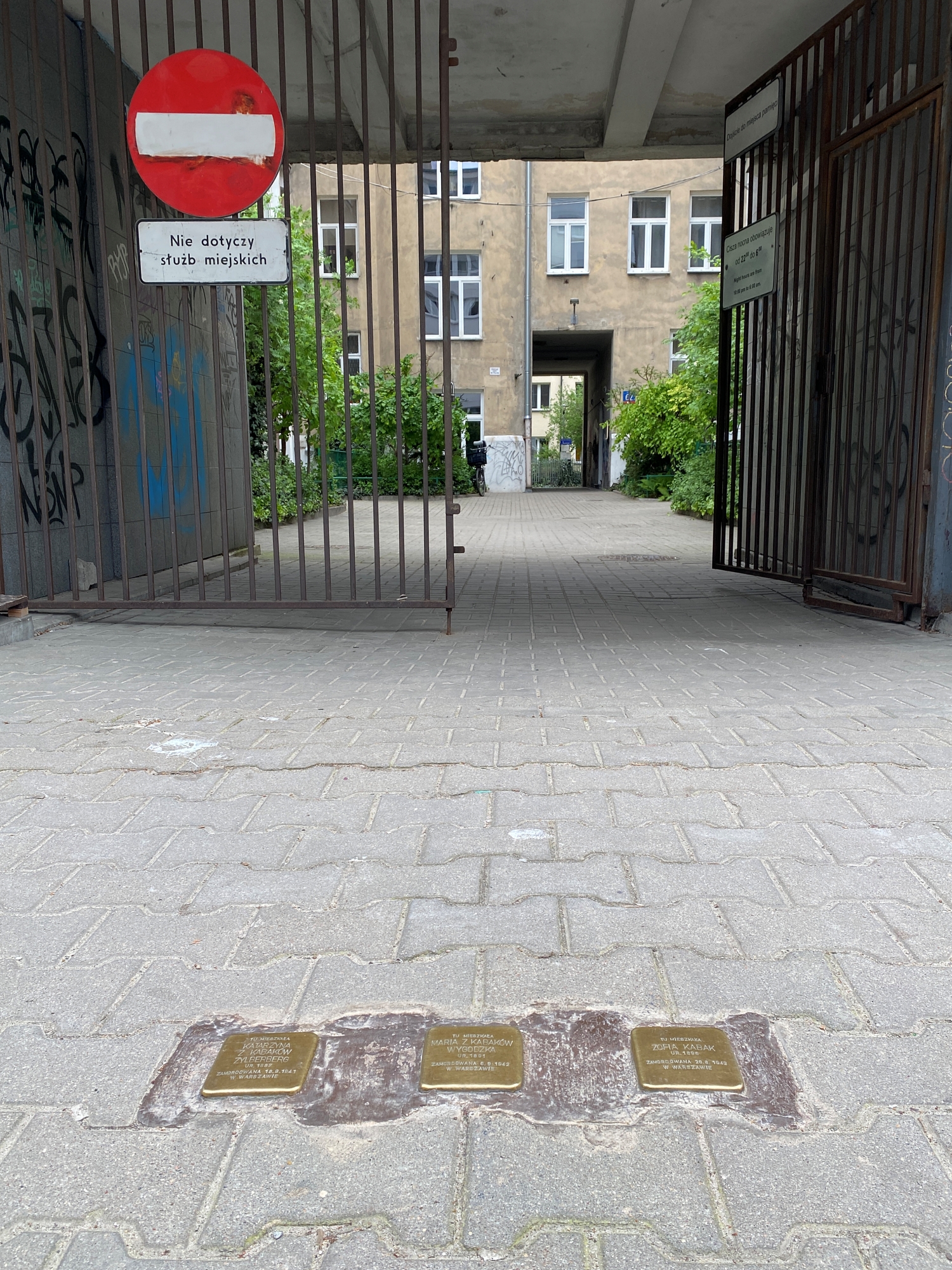
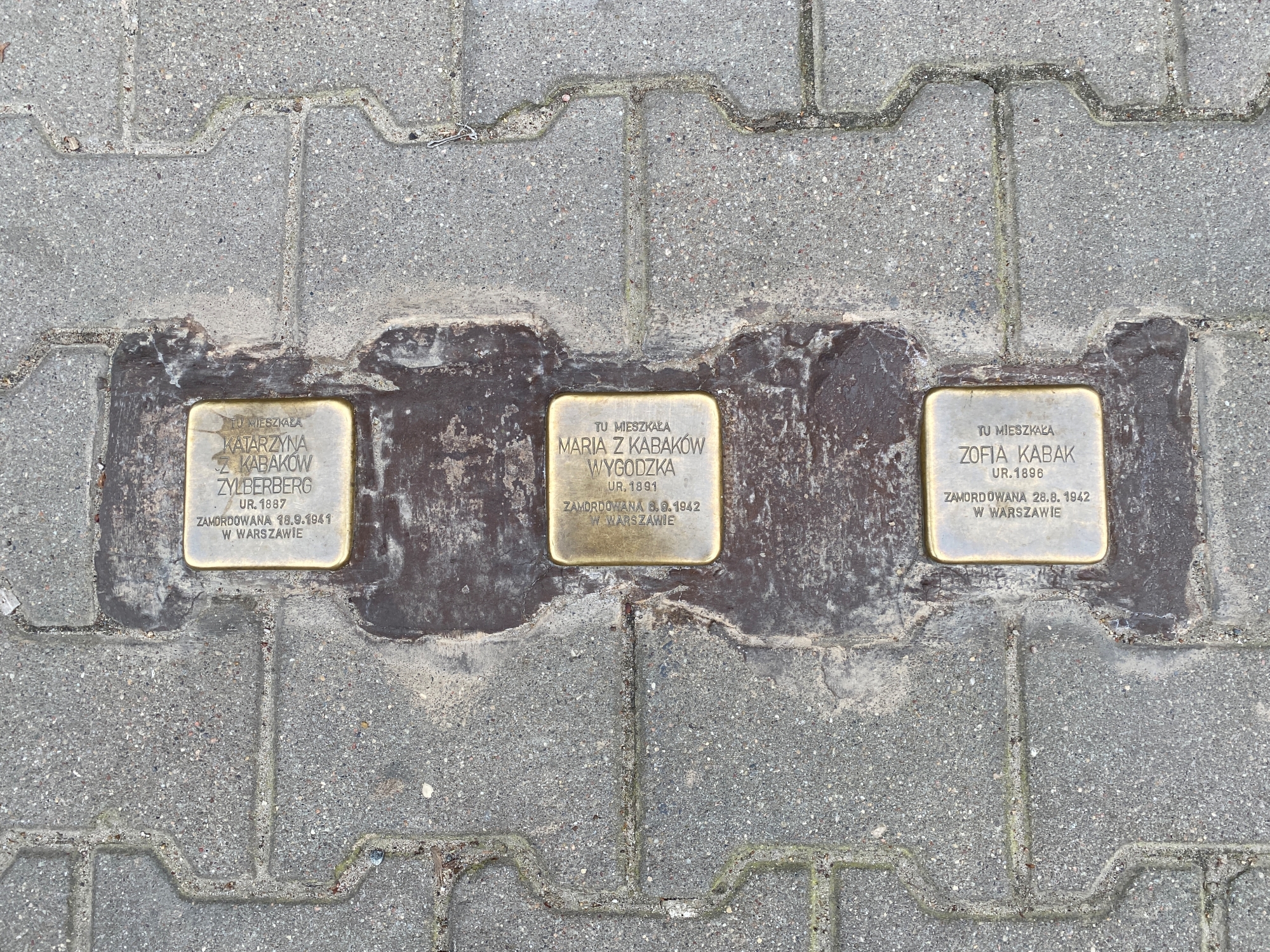
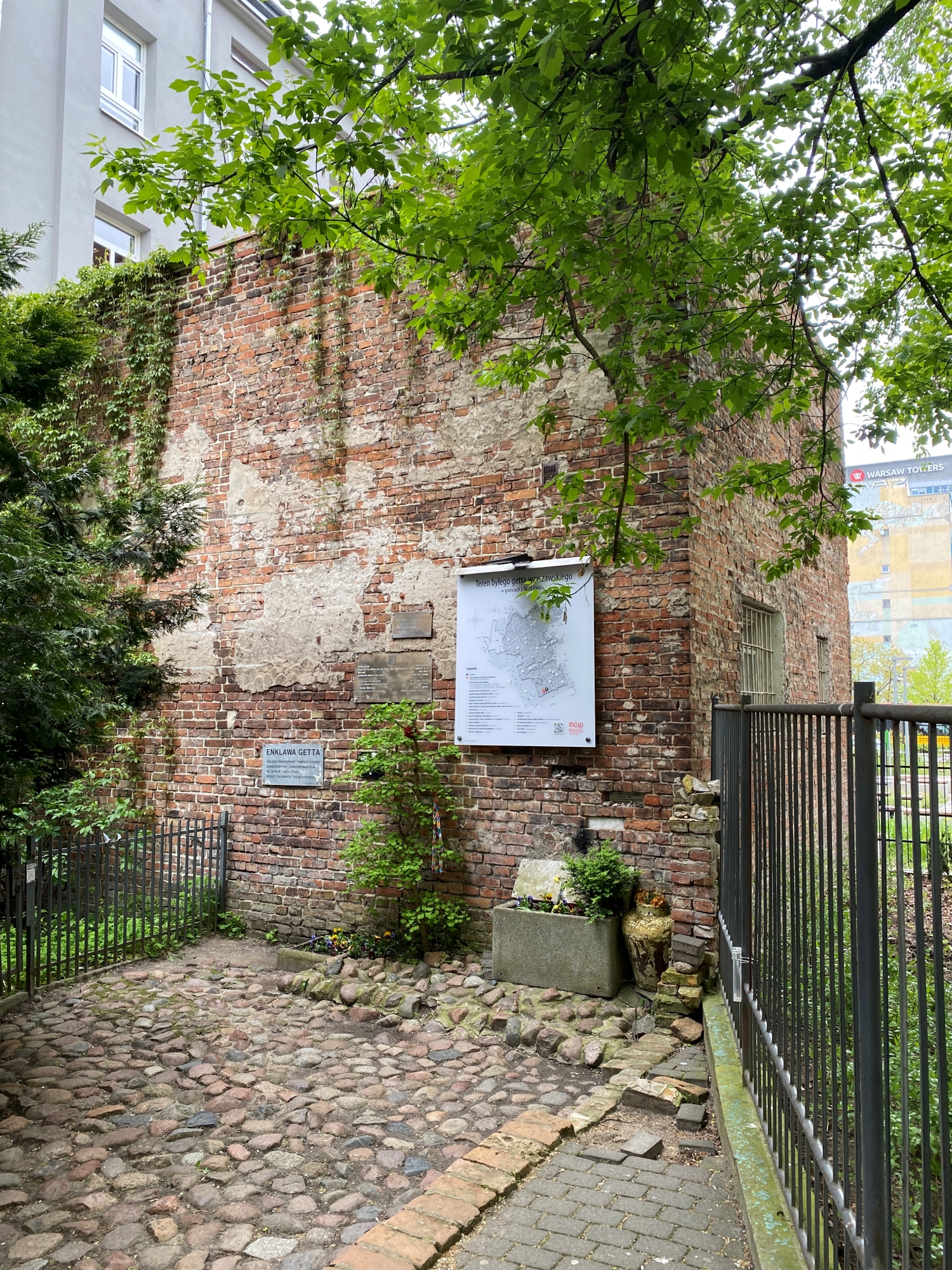

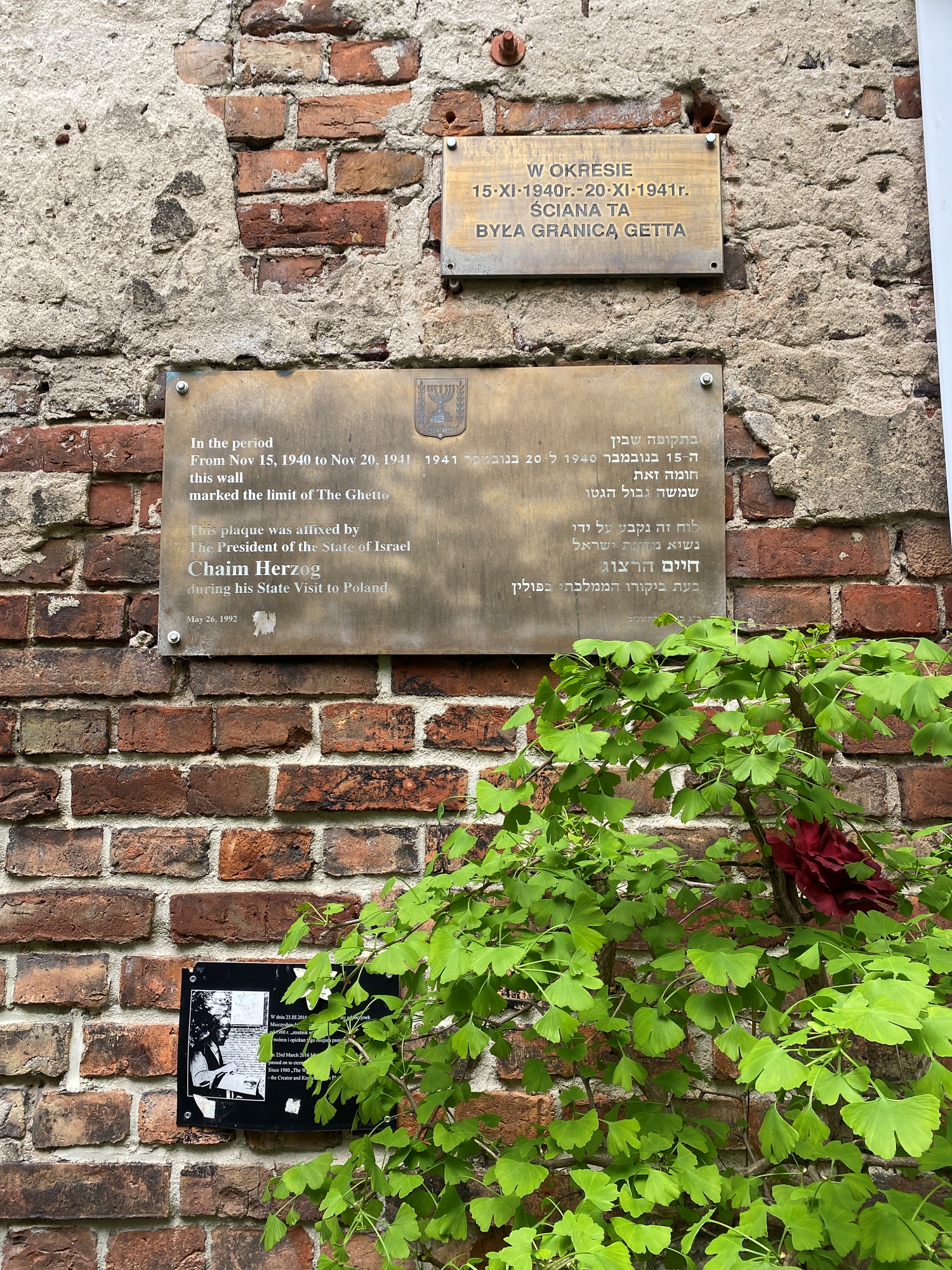
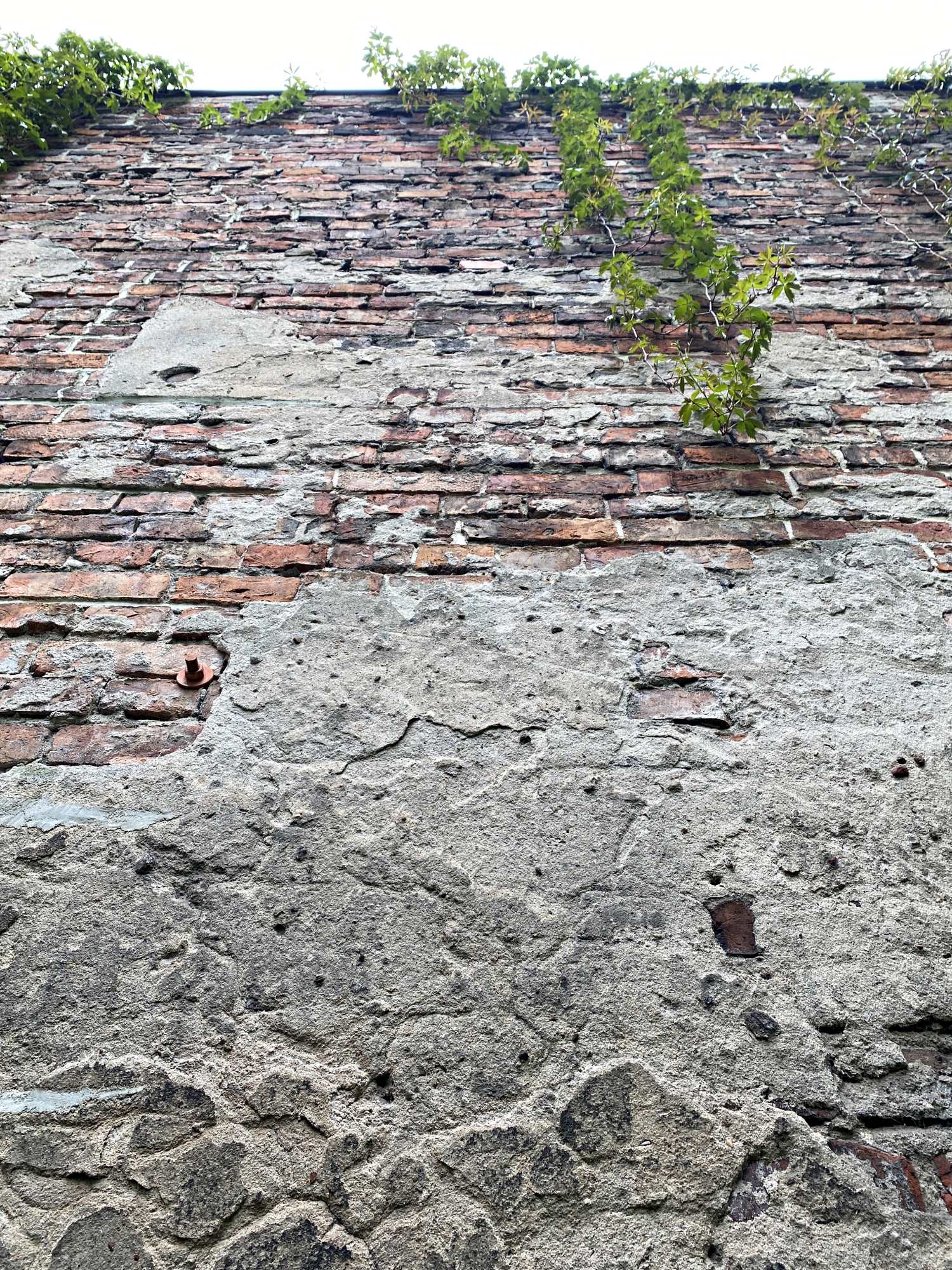
Walking through the courtyard towards the north, one can come across another remnant of the ghetto. Here, its boundary was marked by a fence between properties Sienna 53 and 55, which already existed before 1940. On its western side there is a commemorative plaque, also placed here thanks to the initiator of the commemoration of this place, Mieczysław Jędruszczak. There is a cavity in the wall left by two bricks that were transported to the Holocaust Museum in Washington in 1989.
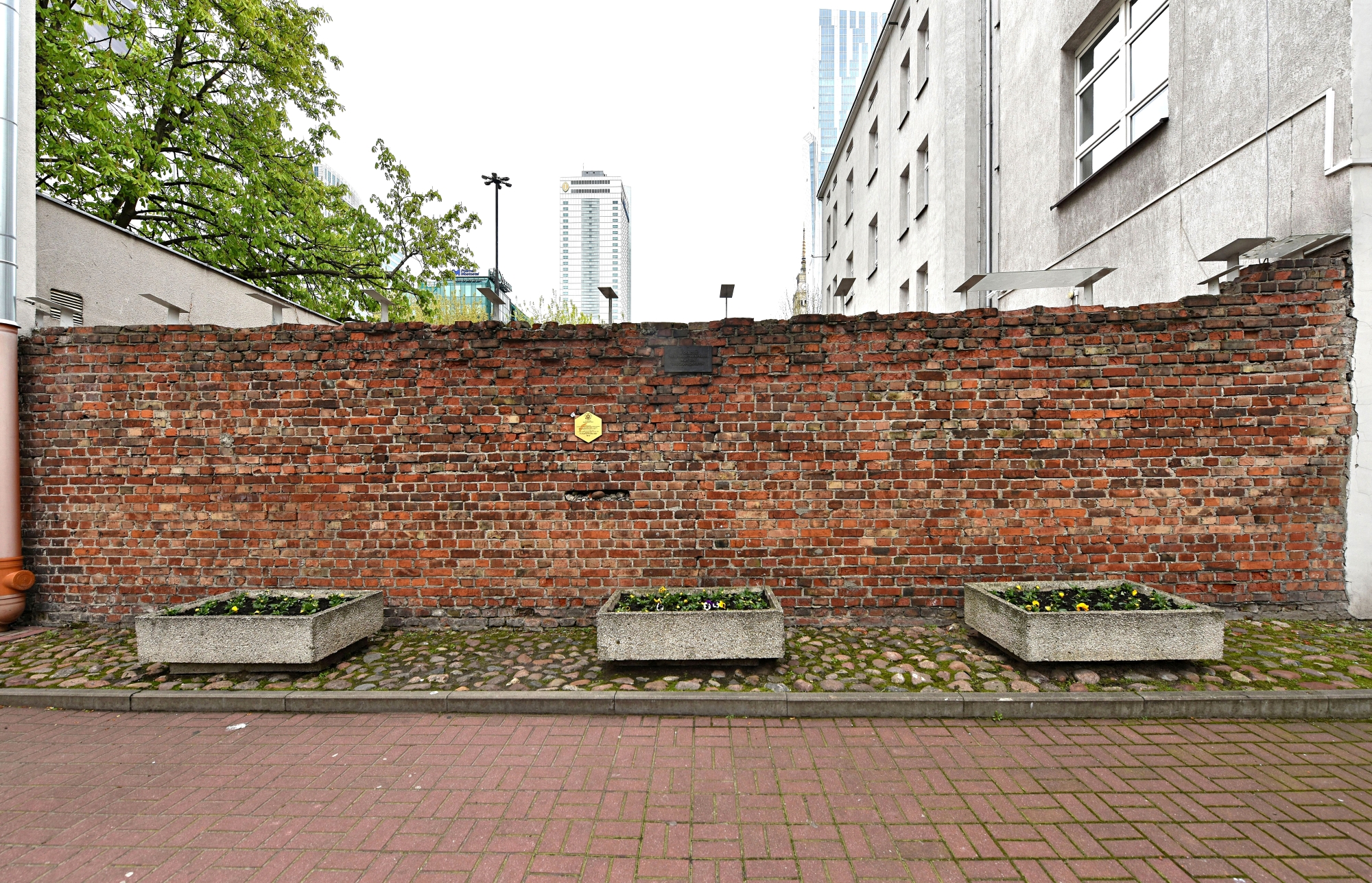
On the eastern side of the fence, on the side of the courtyard of the 12th Henryk Sienkiewicz High School, one of the Warsaw Ghetto Border Monuments has been placed. It is a group of 22 memorial plaques and concrete slabs showing the course of the walls of the Warsaw Ghetto in Wola and Śródmieście. Each monument consists of three elements:
– a 60 × 60 cm cast bronze plaque showing the contours of the ghetto at its furthest boundaries and a pre-war street grid against a plastic map of Warsaw with the point where the commemorated site is located marked,
– a Plexiglas plaque measuring 36 × 50 cm, with brief information in Polish and English about the role played by the place in the history of the enclosed district
– archival photographs from the period of the ghetto’s existence, preceded by a brief history of the ghetto.
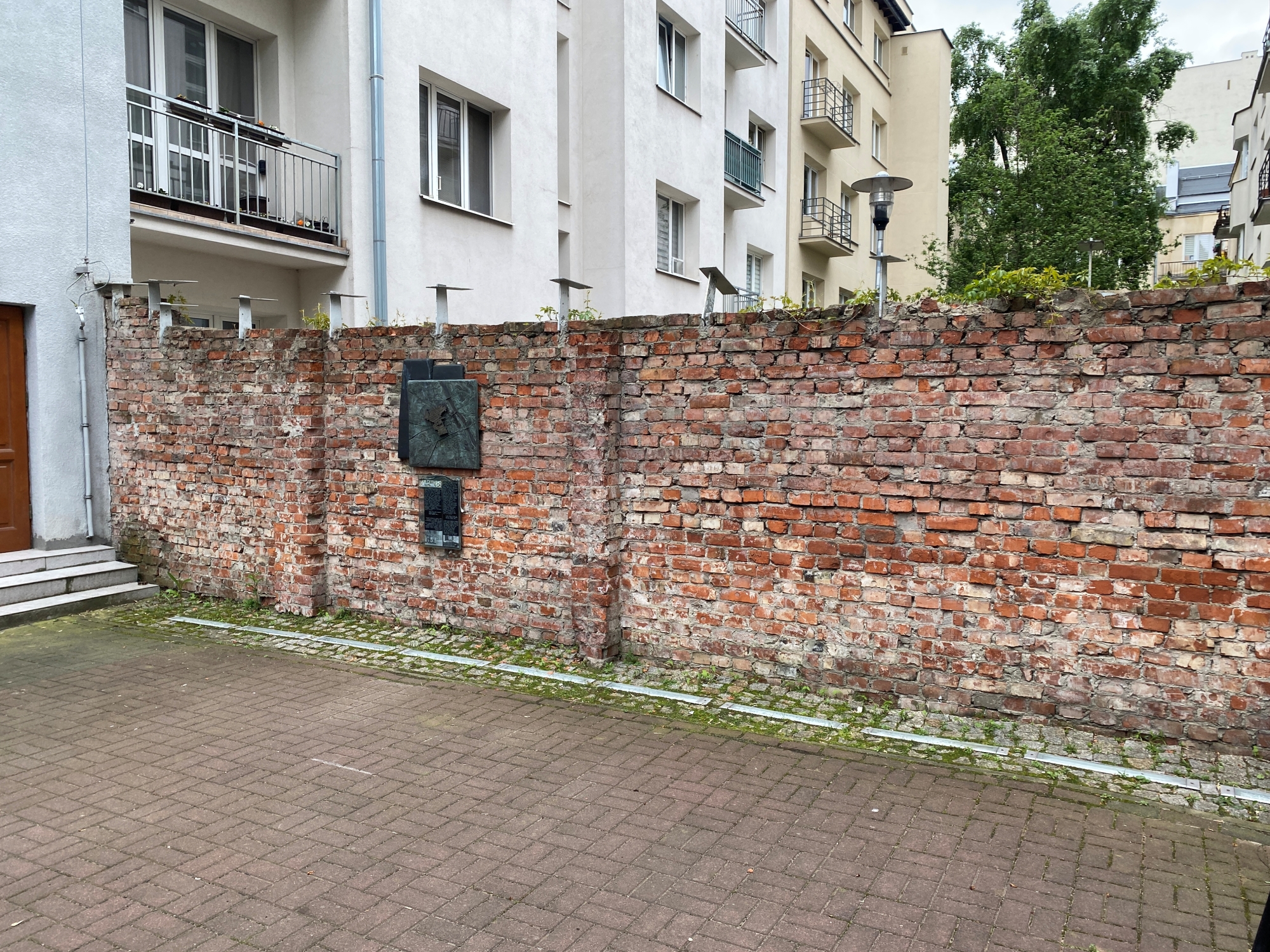

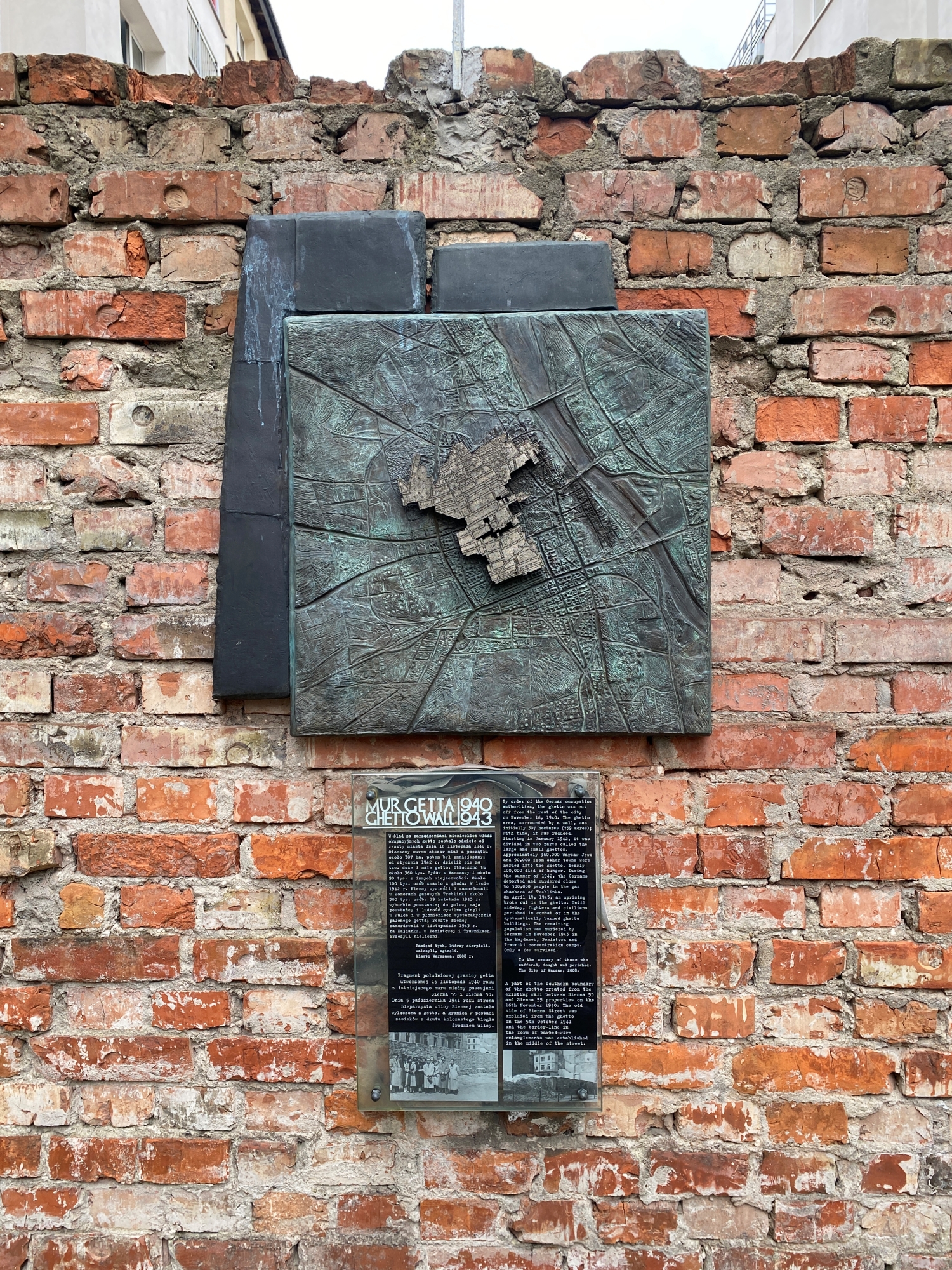


In 2023, a ‘Garden of Remembrance and Integration’ was opened between the Henryk Sienkiewicz Secondary School No. 12 and the Jacek Kuroń Secondary School No. CXIX. It is a modernly landscaped space at the back of the wall at 62 Złota Street, featuring, among other things, seating areas, greenery, an outdoor gym and striking blue slats illuminated in the evening. In addition, there was a historical touch to the garden – an exhibition of historical photographs dedicated to all those who heroically perished in the Warsaw Ghetto. A granite cube has been placed in front of the gate to the garden, marking the ghetto boundaries.
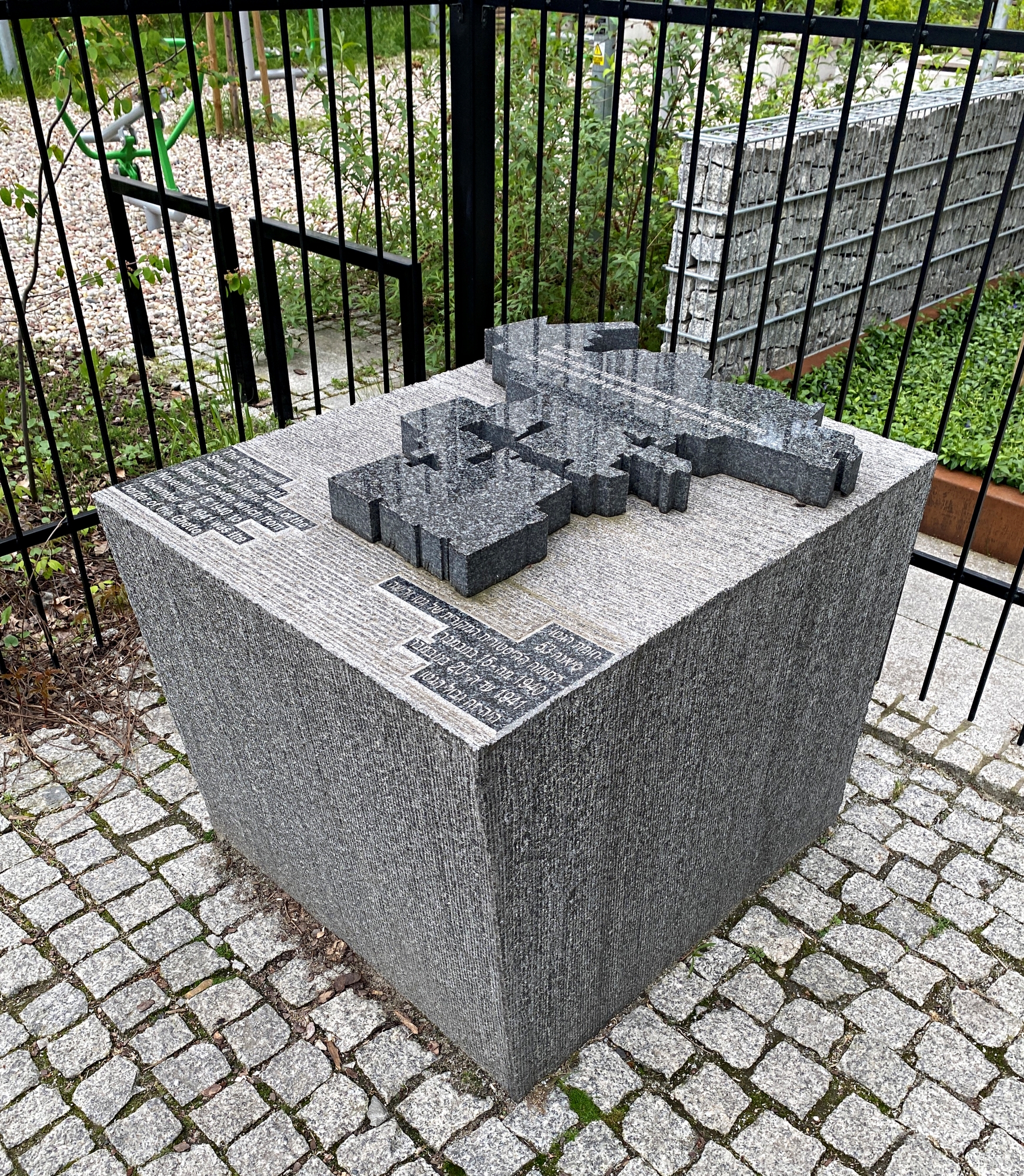
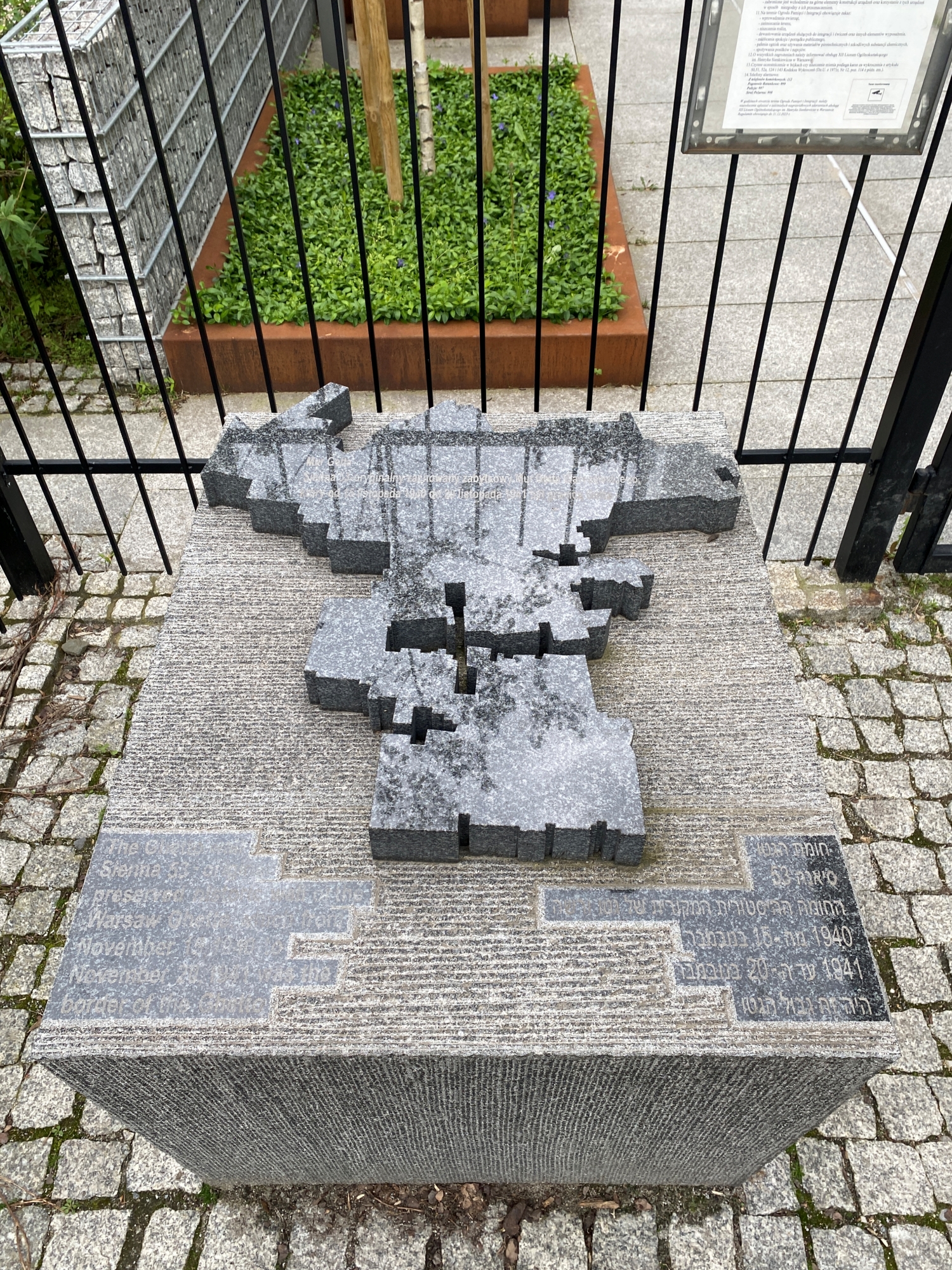

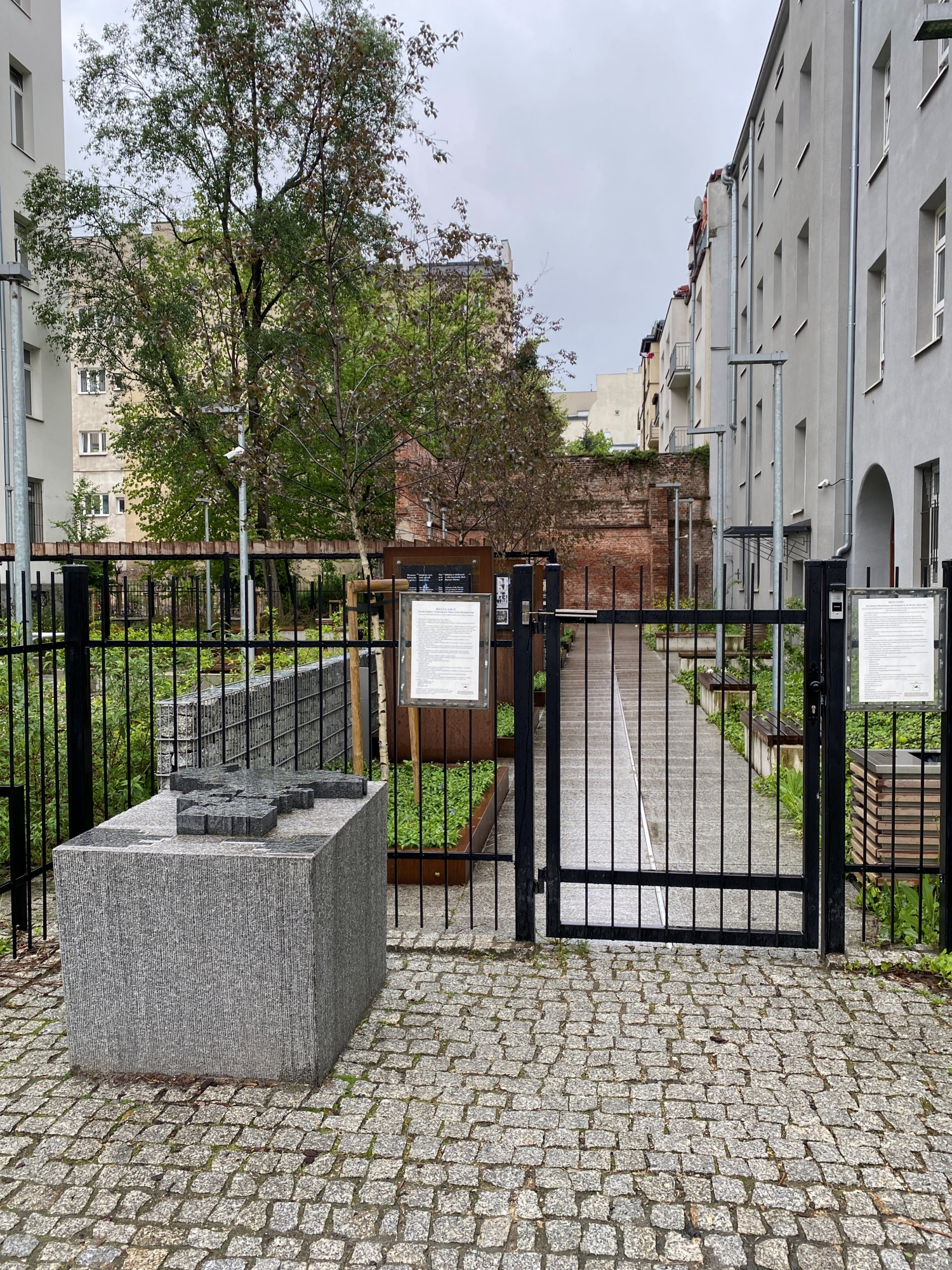
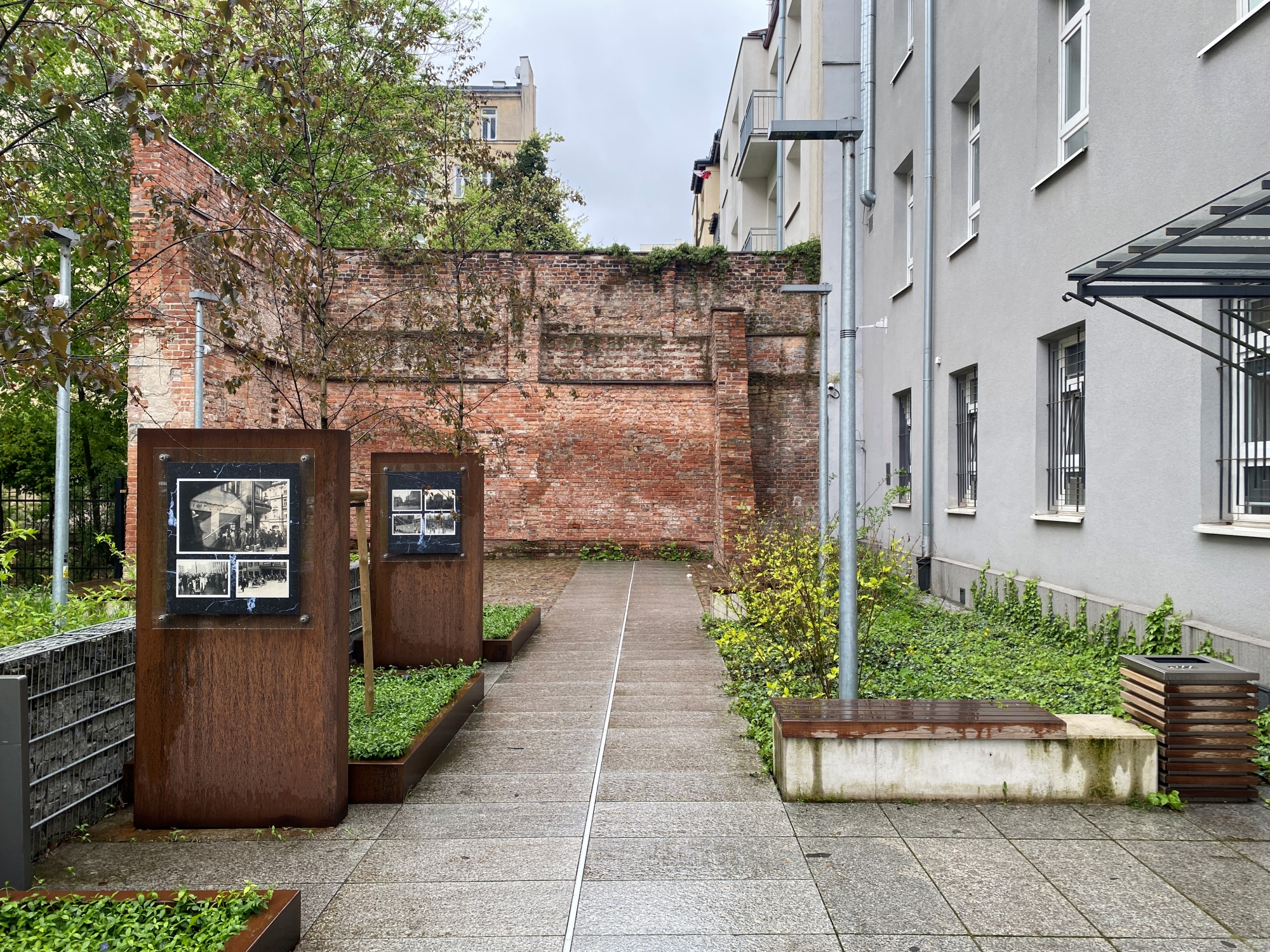
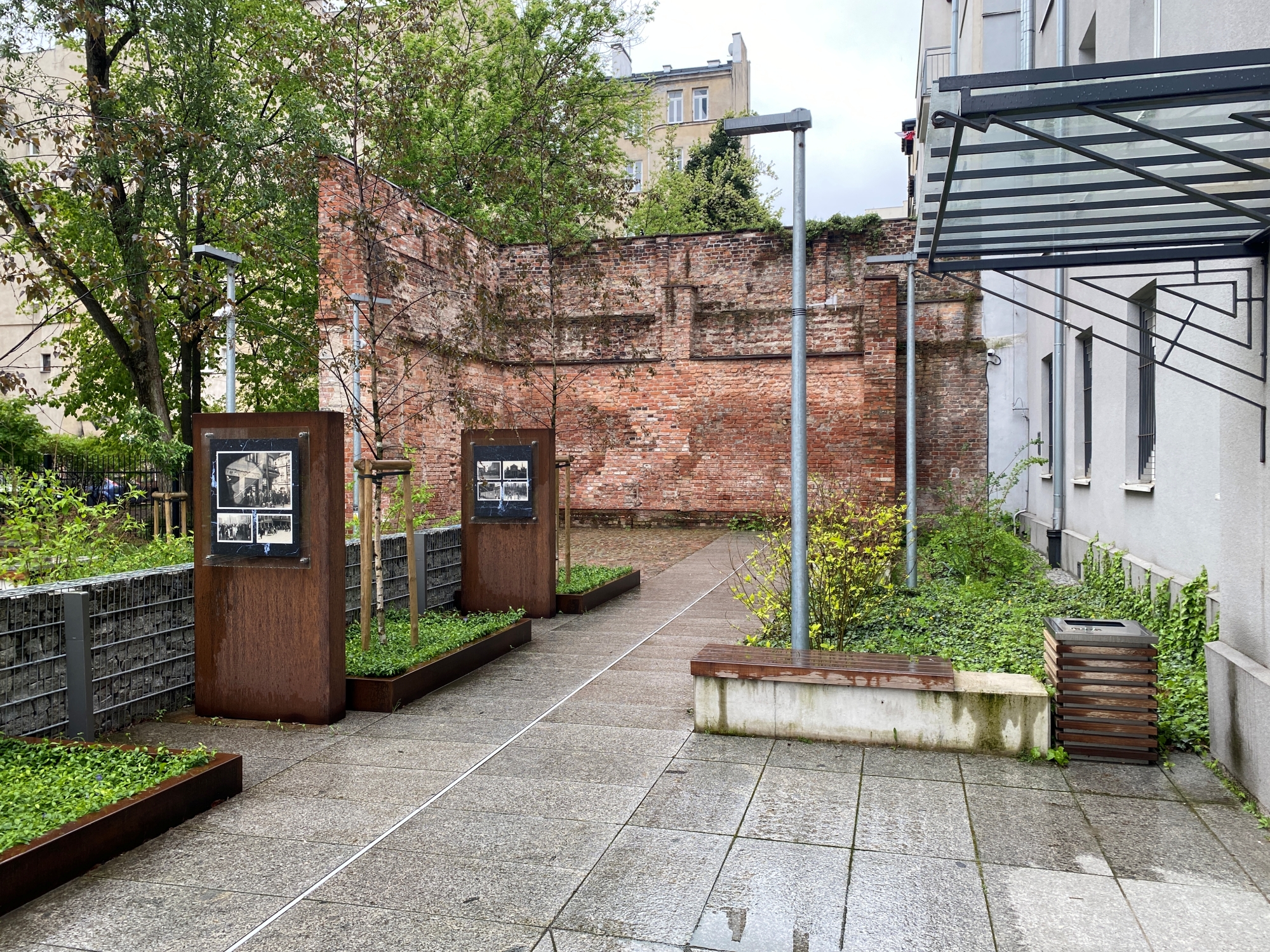



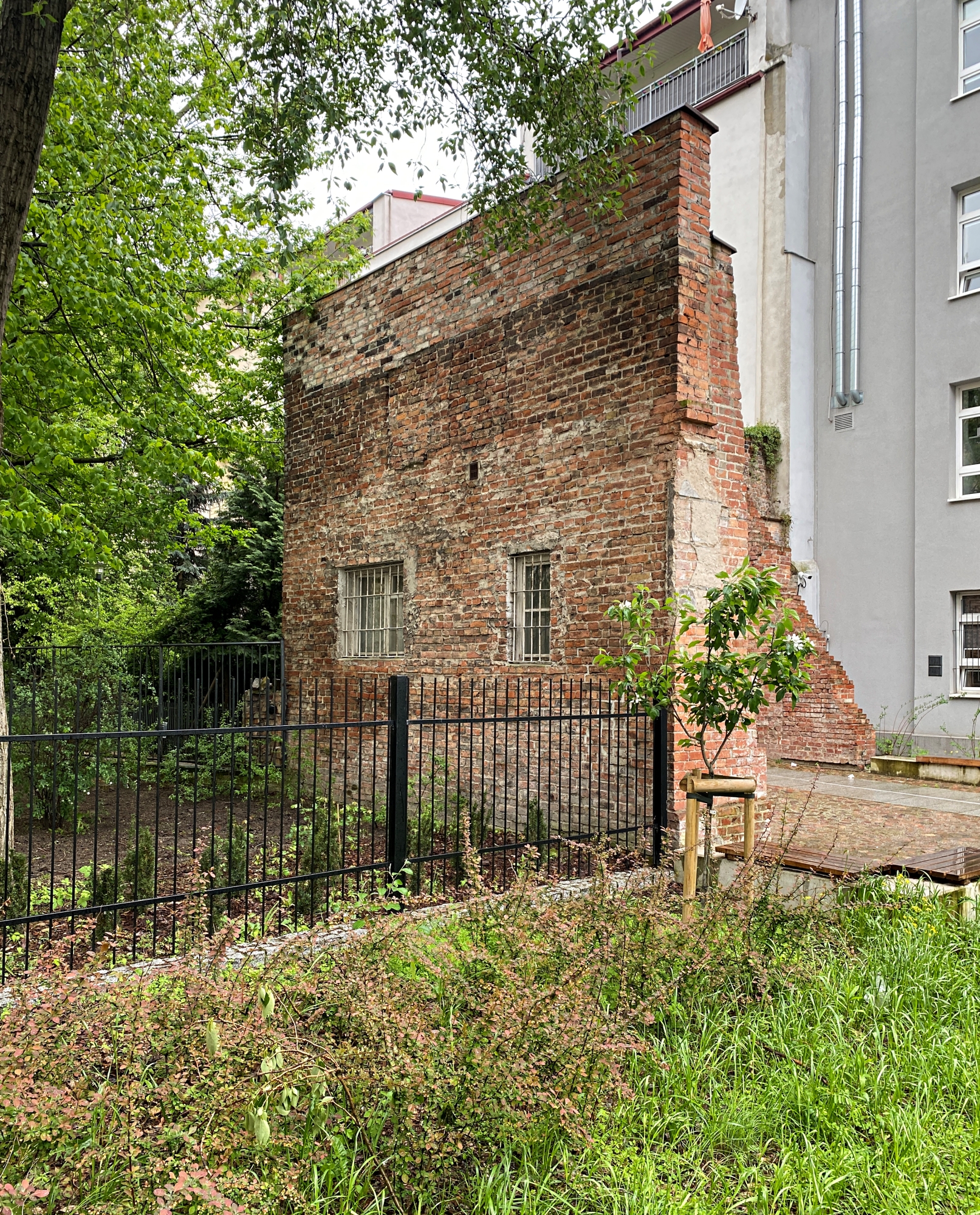
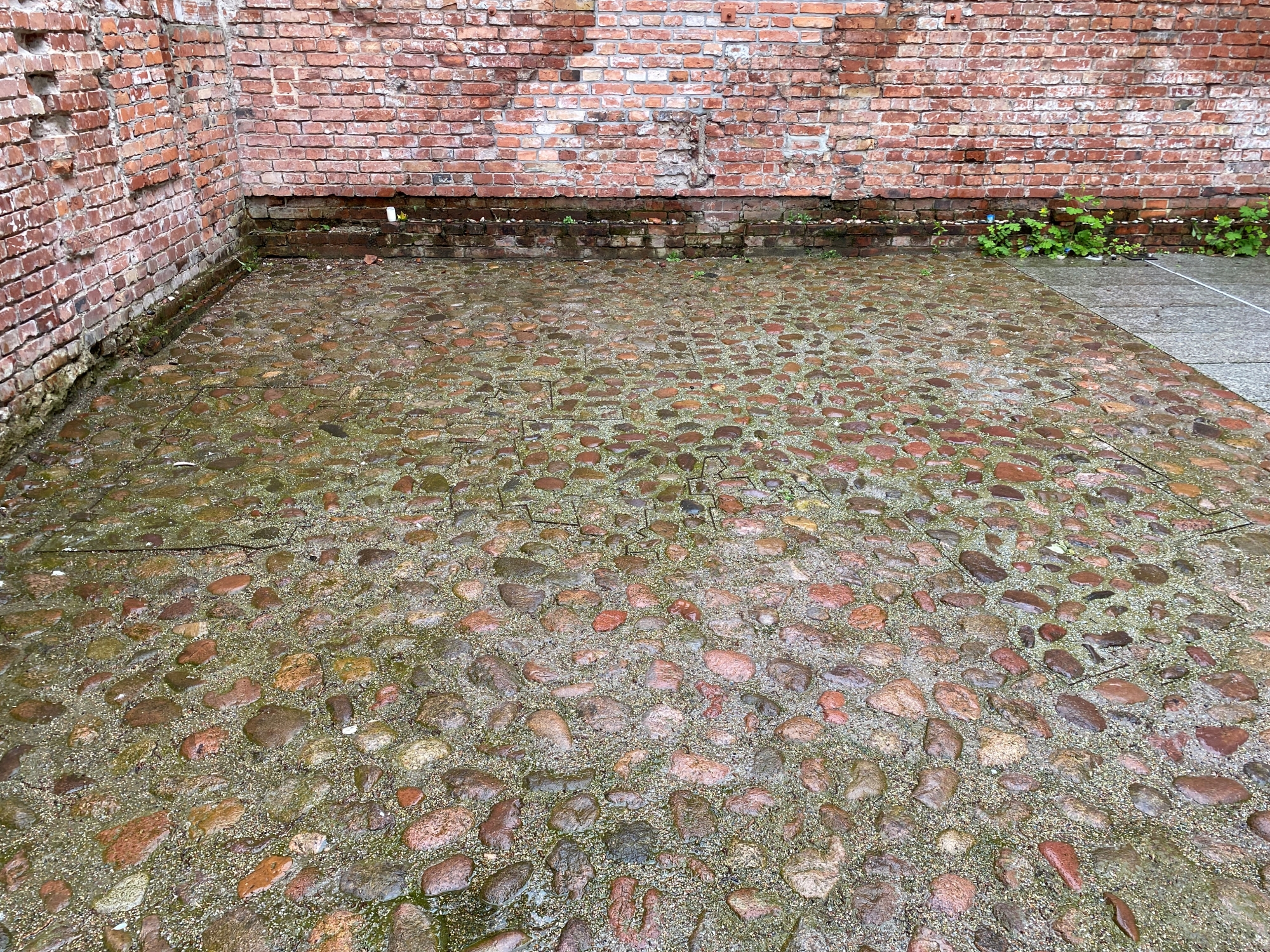
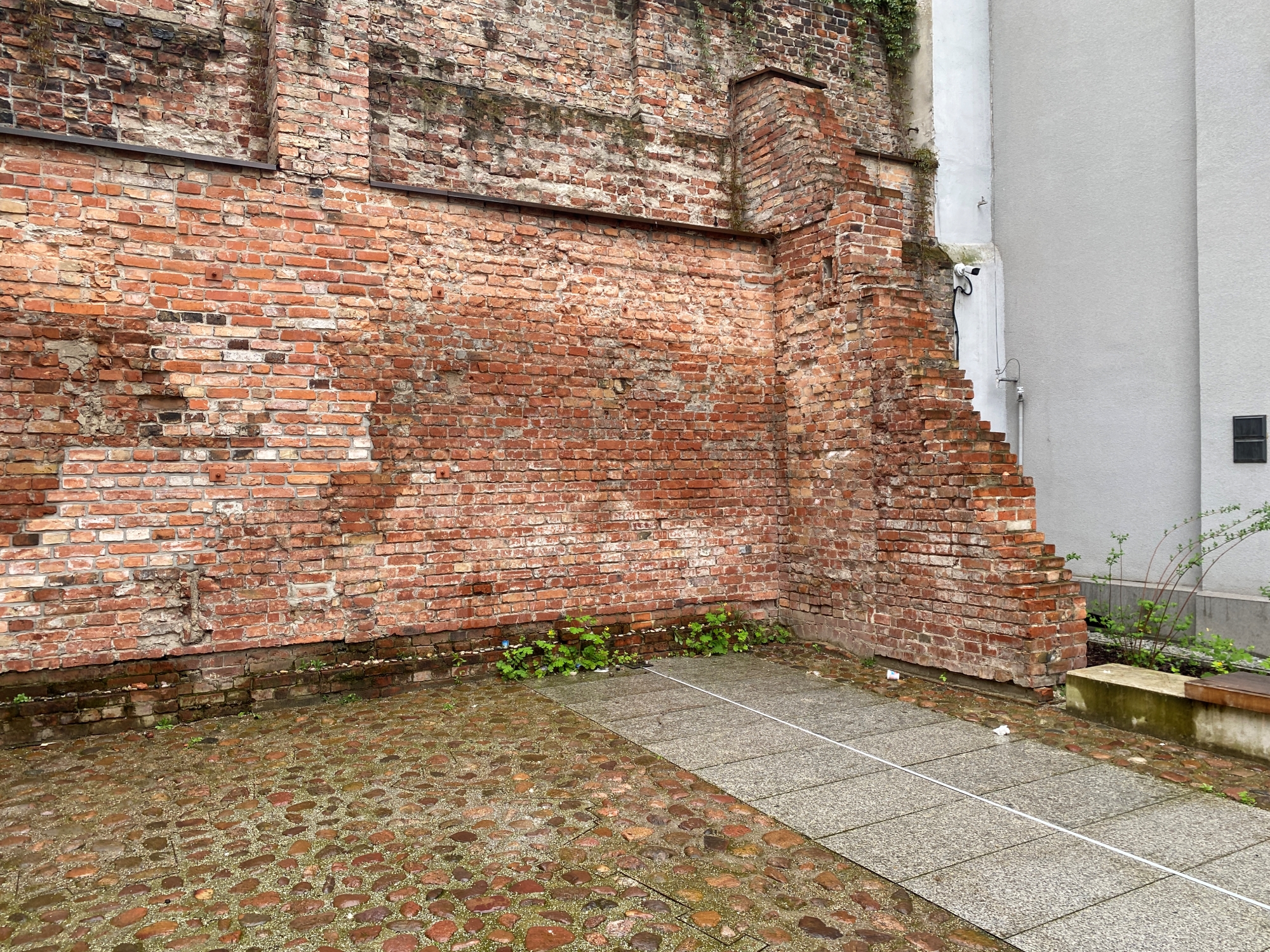
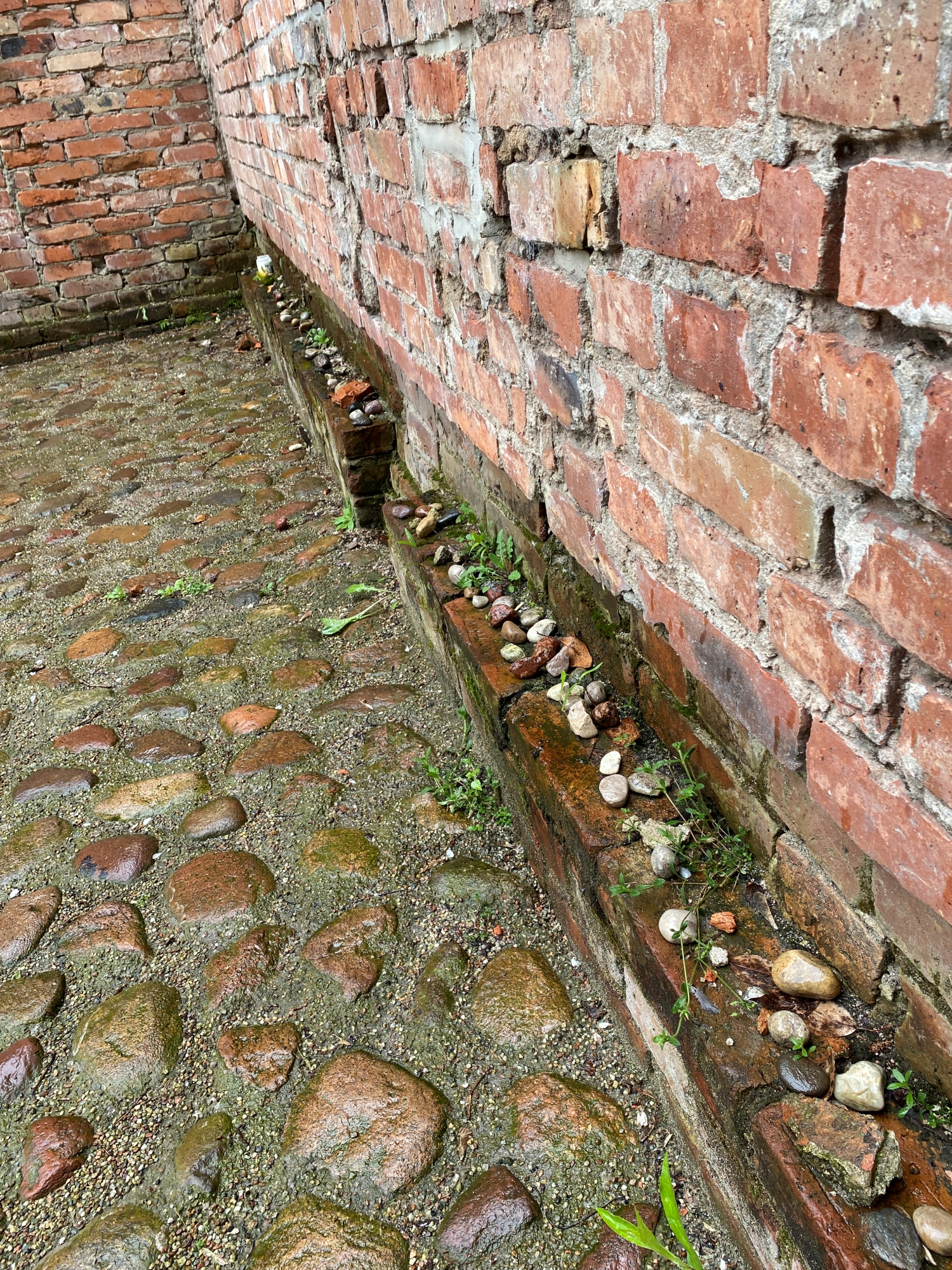
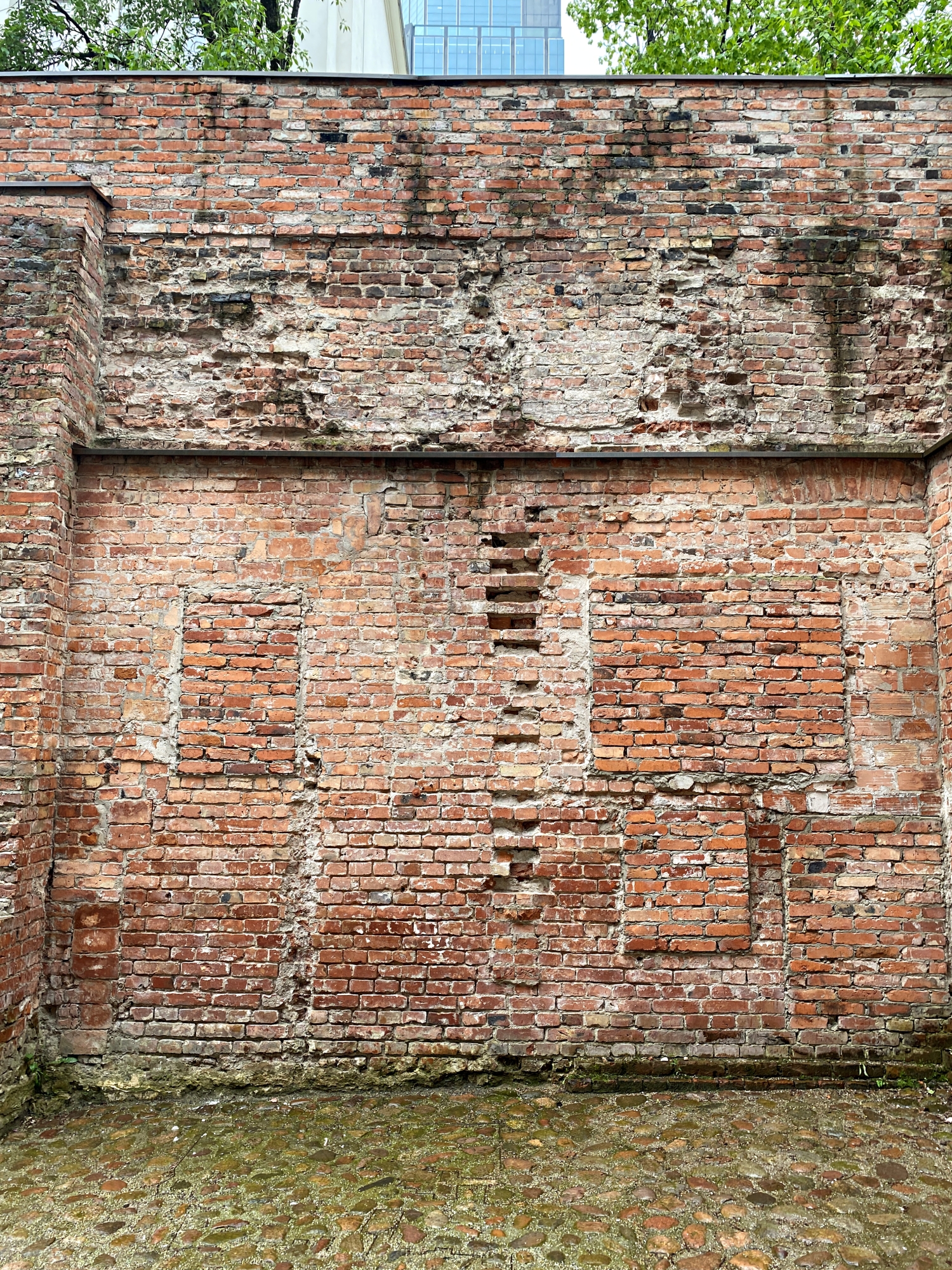

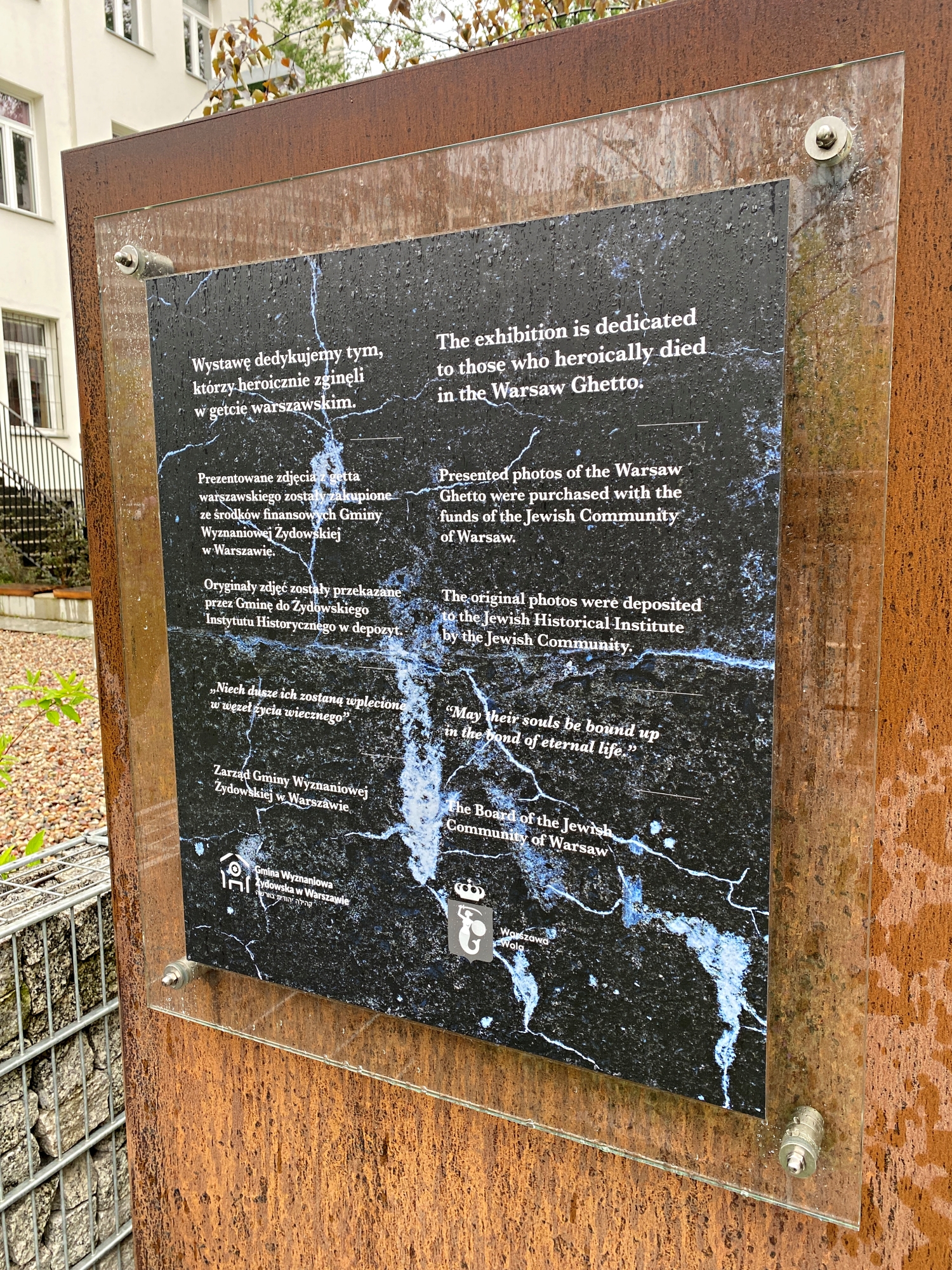
At 63 Żelazna Street, next to the building of the Duschik and Szolce Iron Products Factory, which was not incorporated into the ghetto, was one of the main gates leading to the small ghetto. Only a fragment of the wall that once constituted the border between the two worlds survives today. Shots from the uprising can still be seen on it. Another of the 22 Warsaw Ghetto Border Monuments hangs on the recently renovated wall.

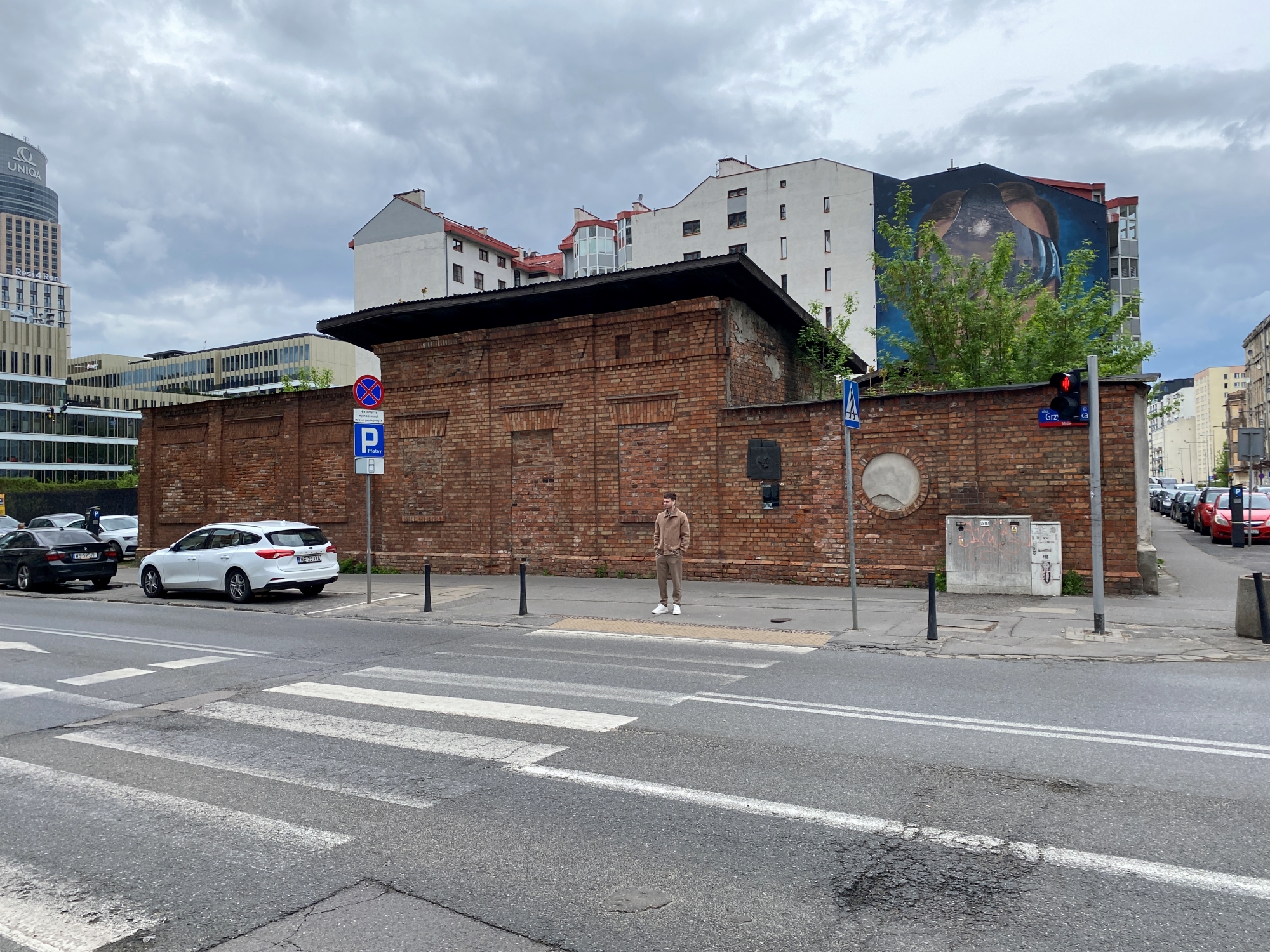
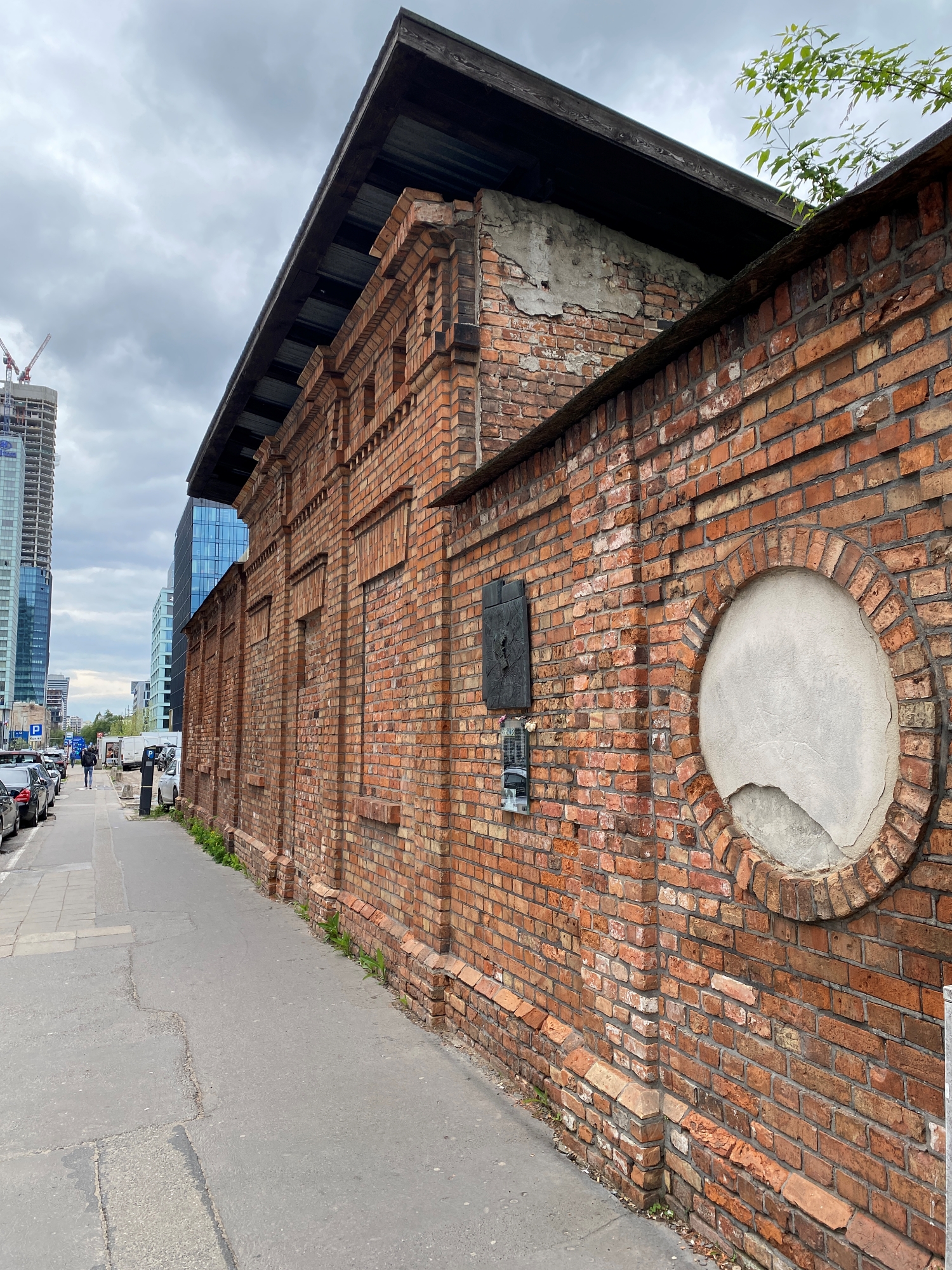
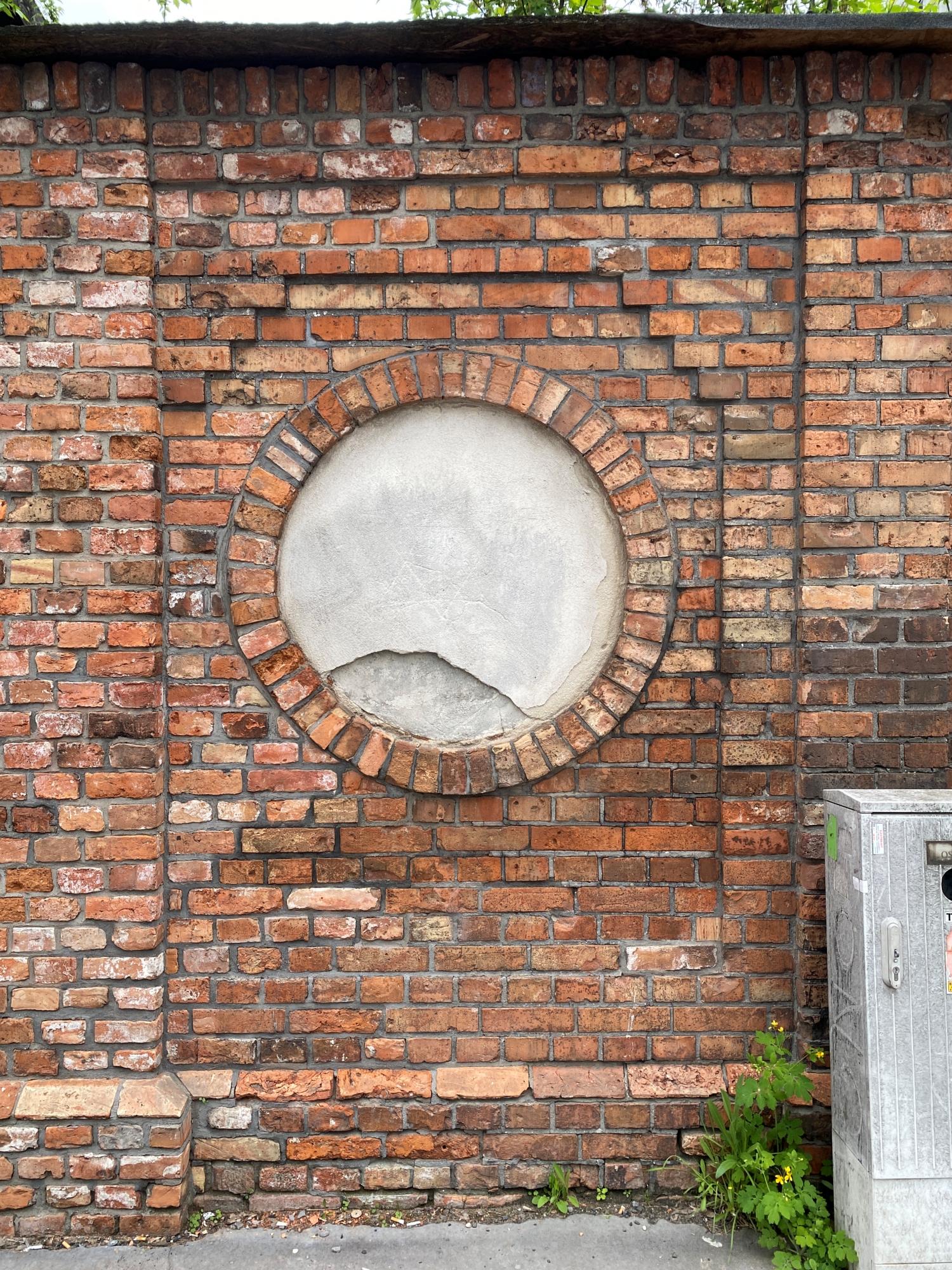
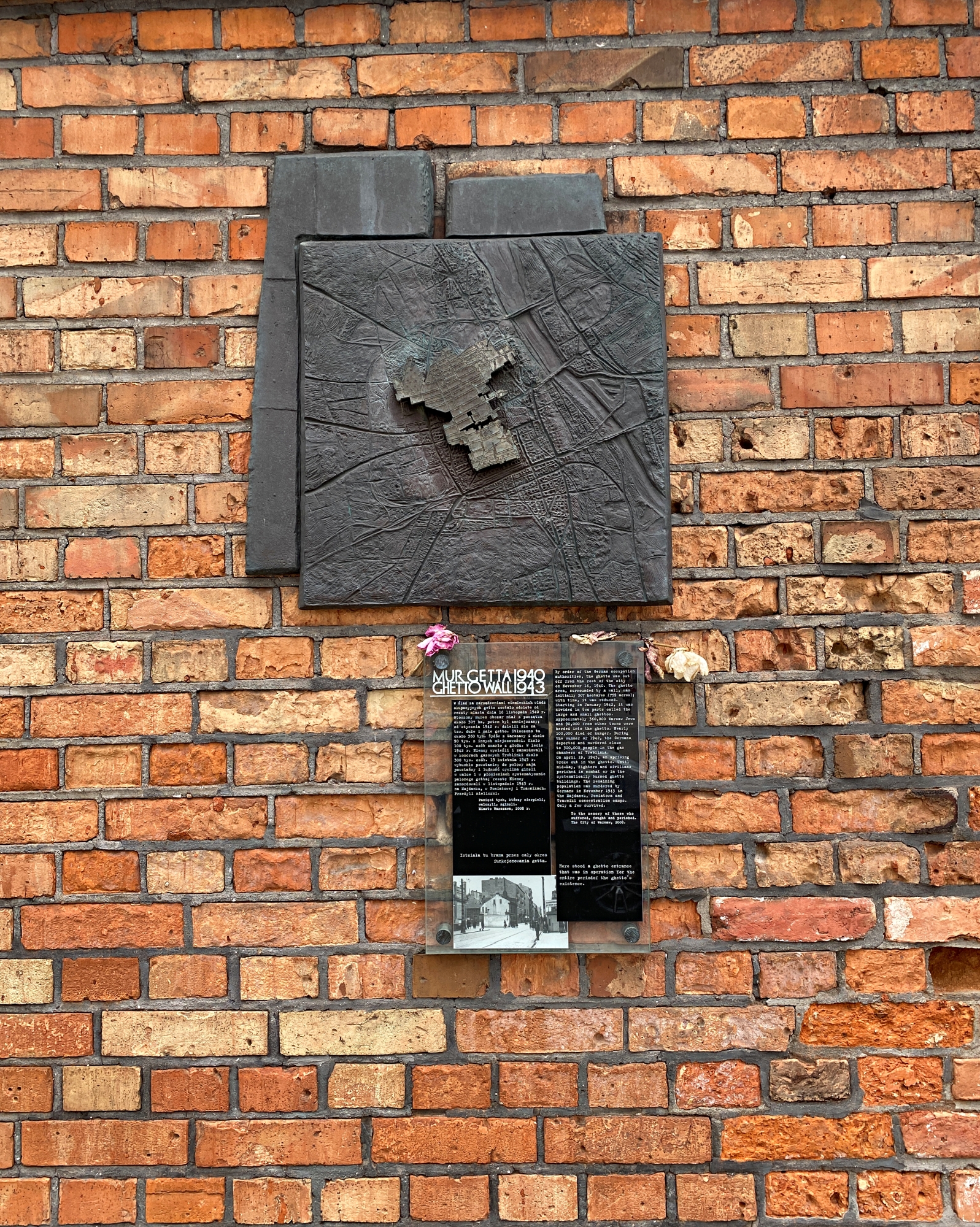
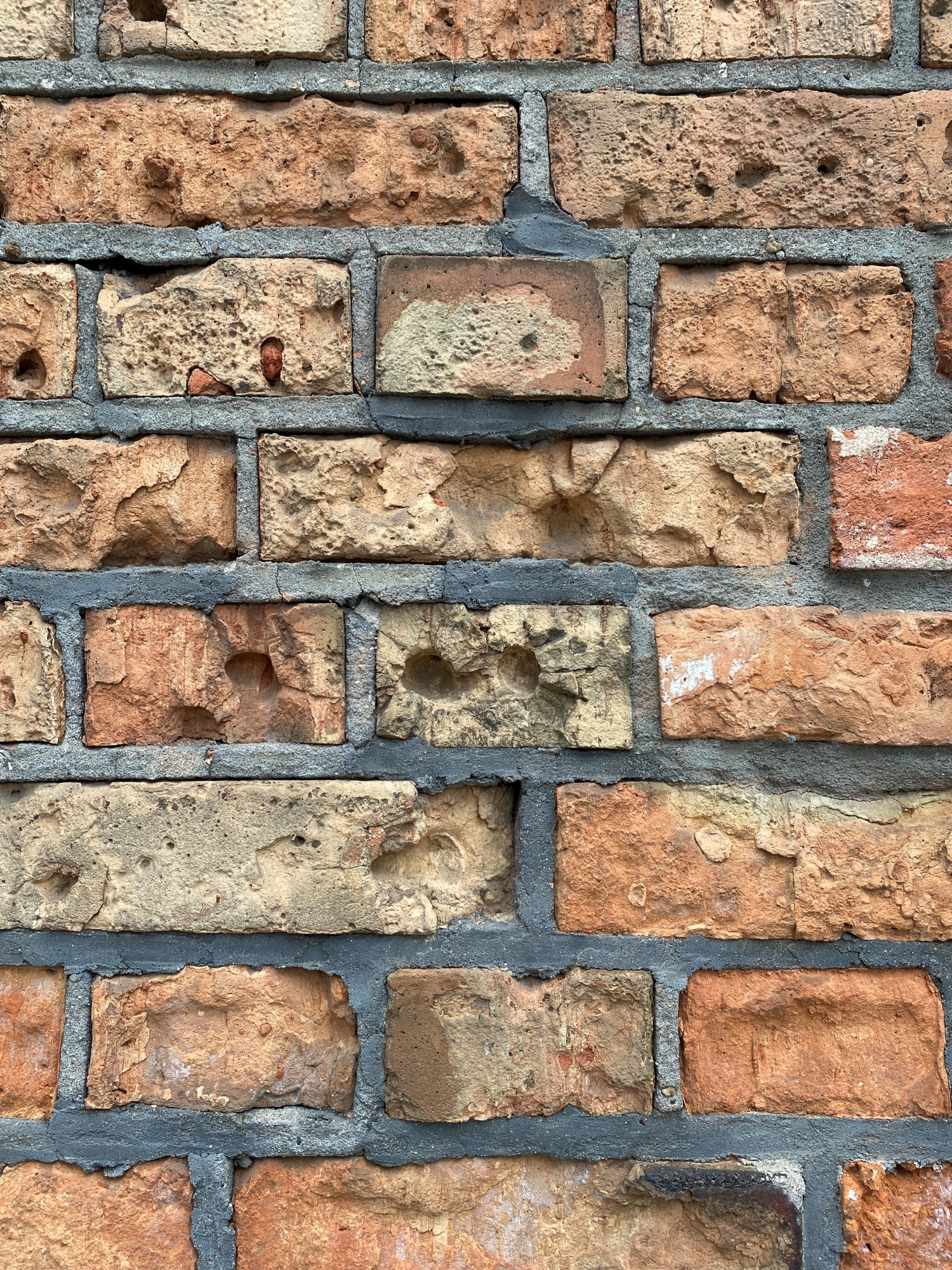

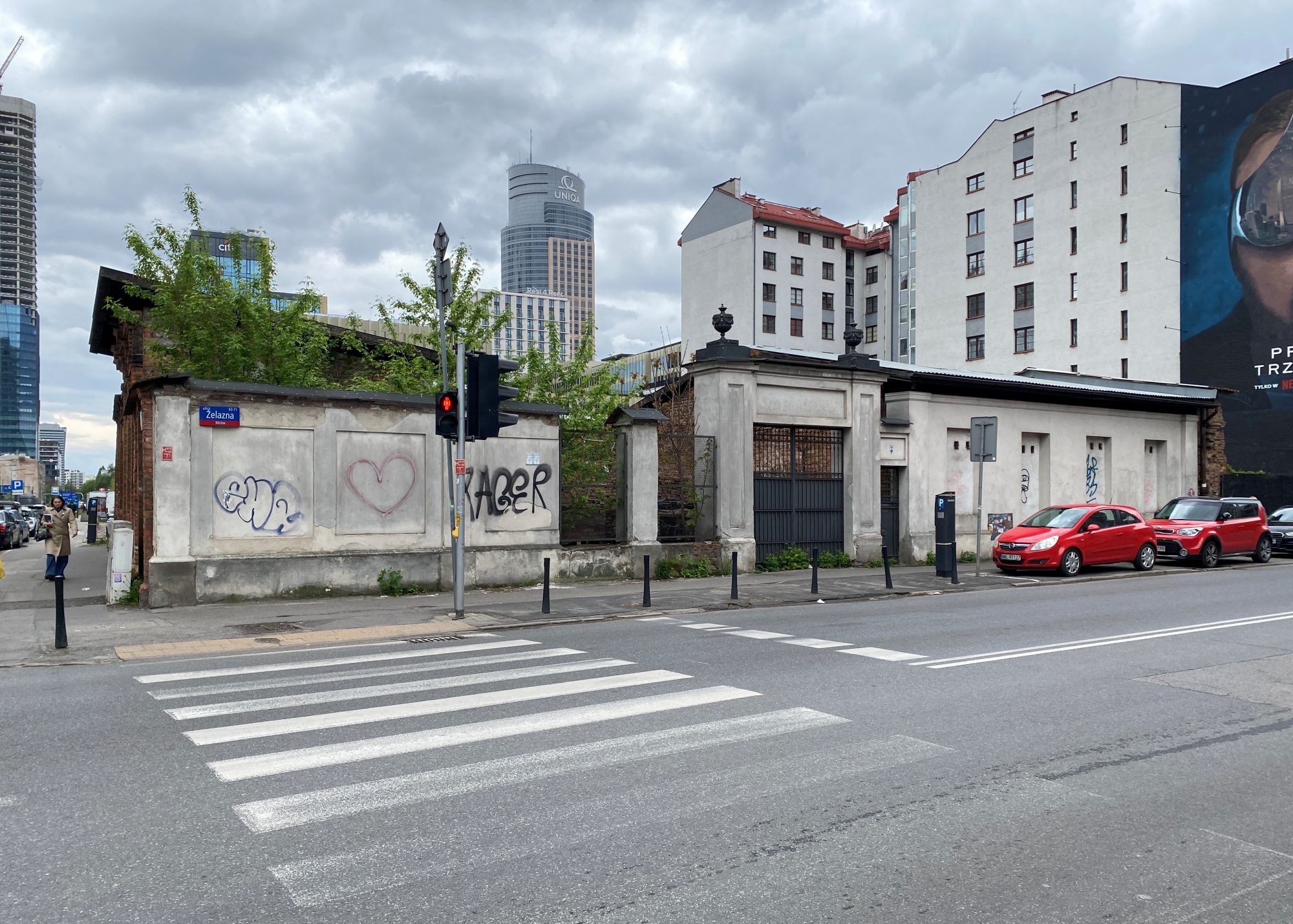
11 Waliców Street – here is the surviving wall of a building belonging to the former Herman Jung brewery. The brick remnant of the factory is densely covered with traces of the battles fought in its vicinity. It formed the border of the ghetto from November 1940 to August 1942. between 1999 and 2000, the wall was incorporated into the Aurum office building. in 2017, the structure was demolished and an 11-storey residential building was completed in its place in 2019. A preserved section of the ghetto wall was reintegrated into the ground floor of the new building, but the historic gate was removed during construction, sparking widespread outrage and criticism.
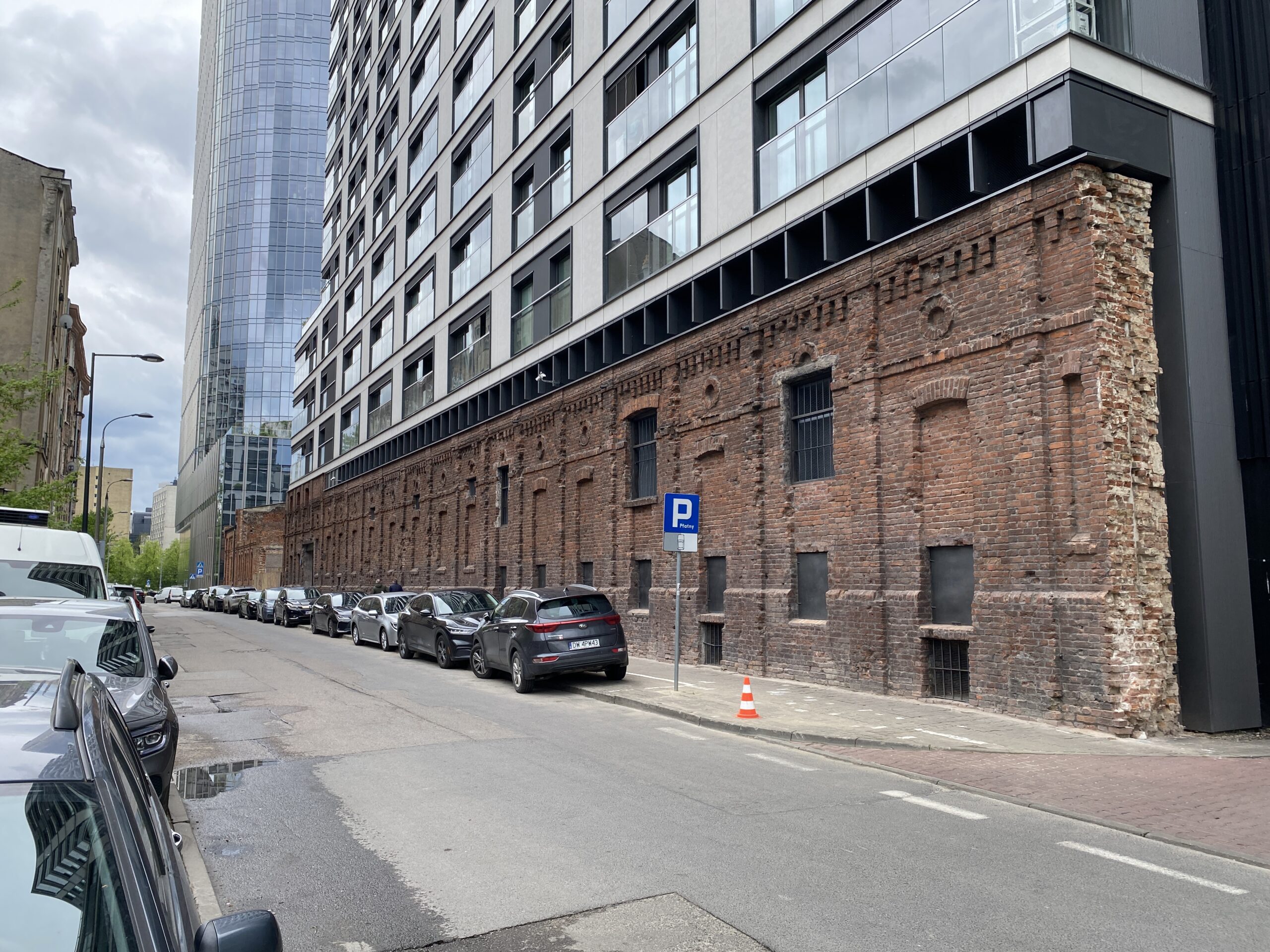


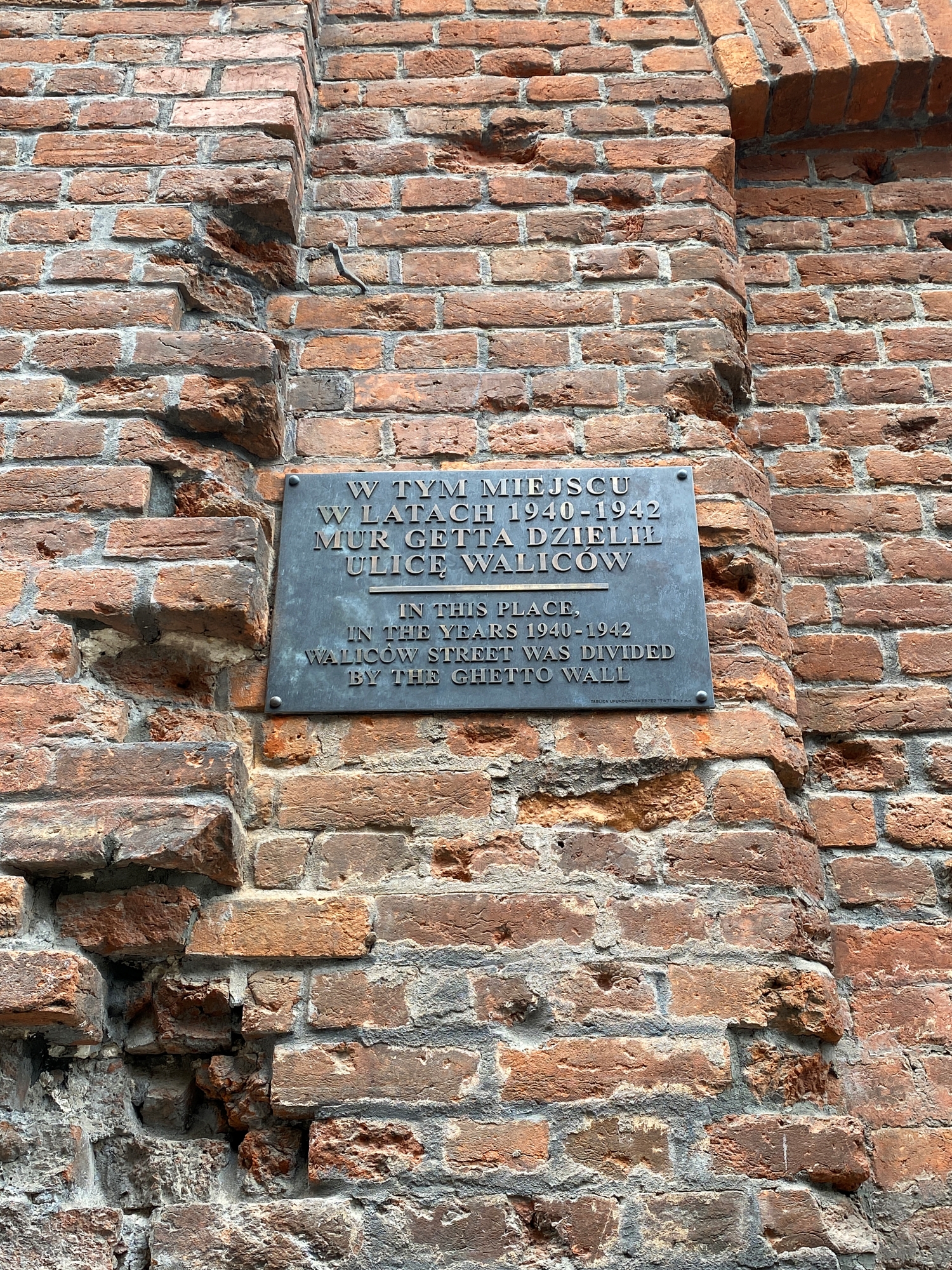
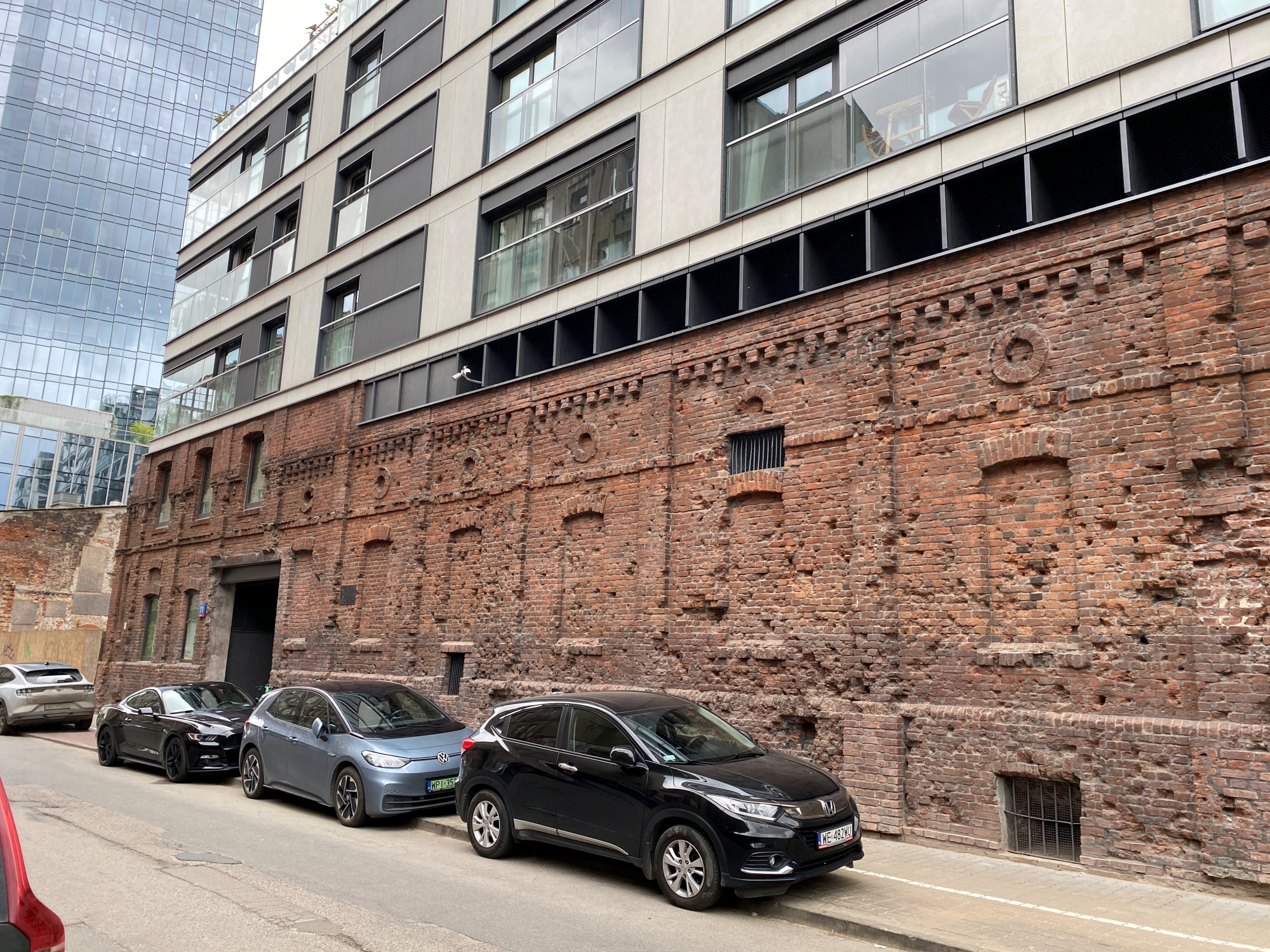
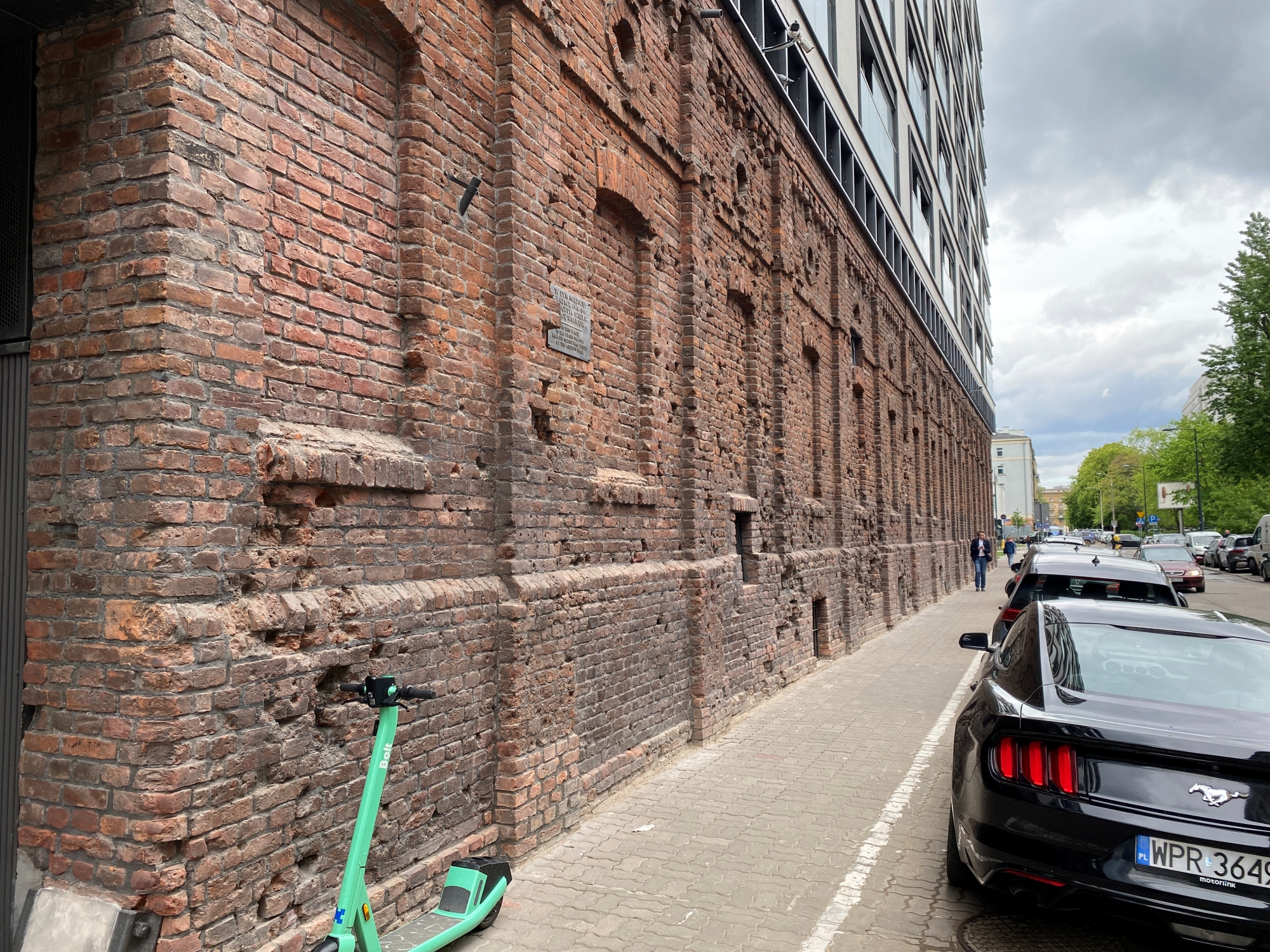
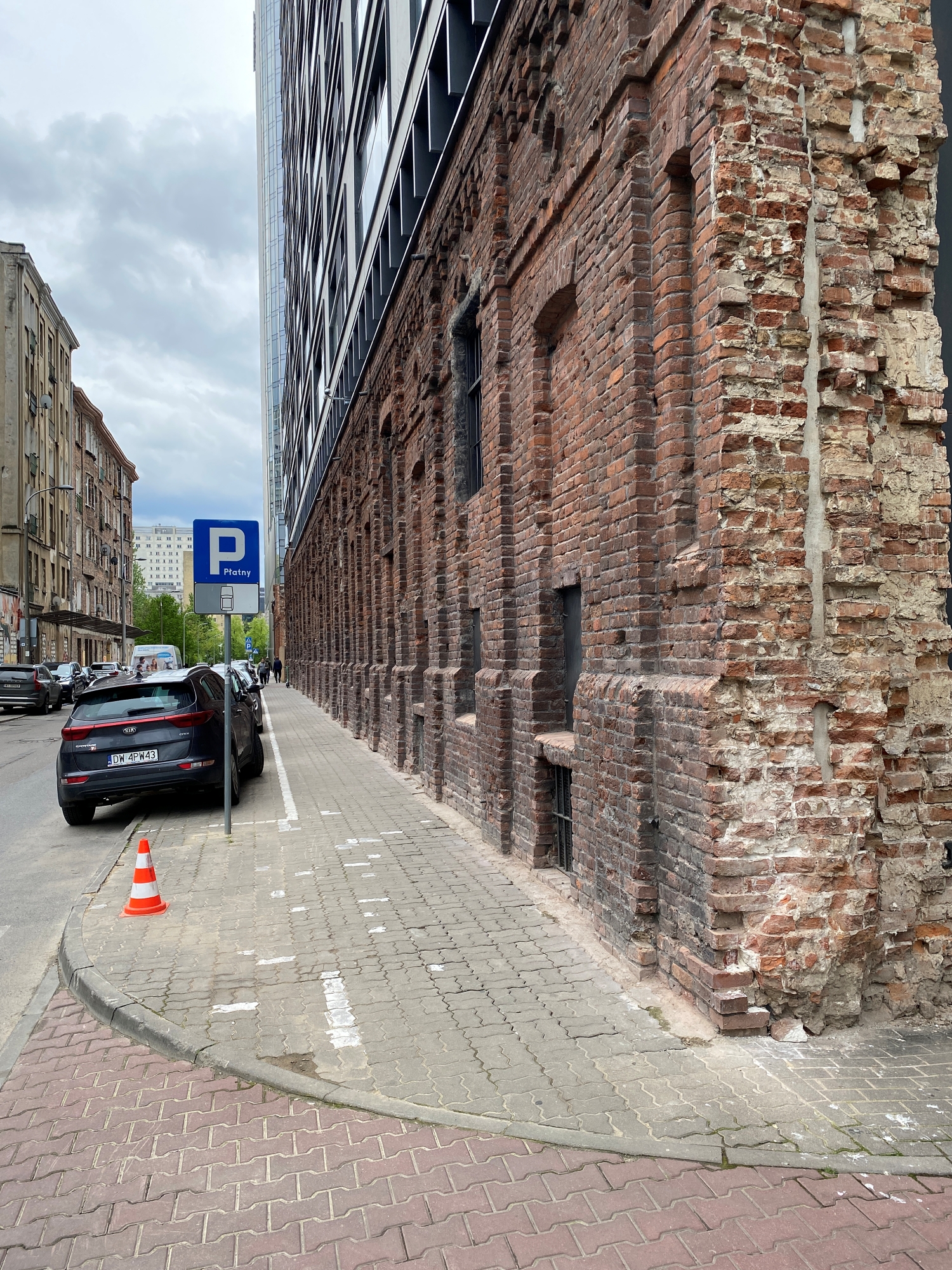
The side walls of the Grodzki Courts building in Leszno (formerly 53/55 Leszno Street, now the District Court, 127 Solidarności Avenue), together with the walls enclosing the inner courtyards of the building, which was not incorporated into the ghetto, marked the boundary of the ghettoised district from November 1940 to August 1942. The main entrance from Leszno Street led into the ghetto, while the rear entrance from Ogrodowa Street led to the Aryan side, making escapes and smuggling food, medicine and weapons possible. It was through the courts that people collaborating with Żegota, such as Irena Sendlerowa, led Jewish children to safe hiding places. The building was one of the few in the area to survive the Second World War.
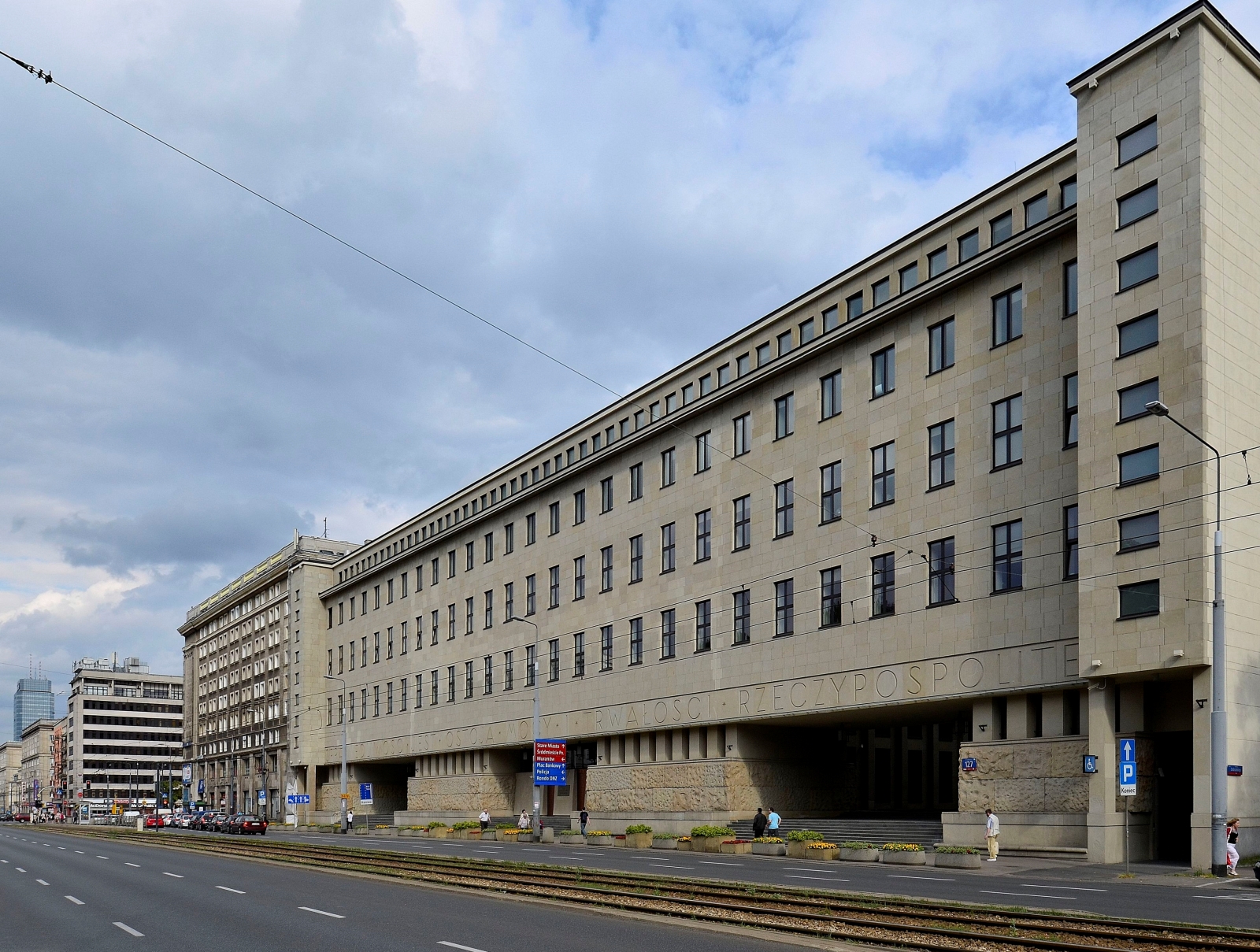
The courthouse in 1941 and today. Small vendors sit on the stone steps. Photo by W. Georg. The photograph is from the collection of the E. Ringelblum Jewish Historical Institute in Warsaw.
There are other small ghetto walls in Warsaw, including those at 78 Okopowa Street, 10 Stawki Street, the fence of the Jewish cemetery at Spokojna Street or a small section at the corner of Świętojerska and Nowiniarska Streets.
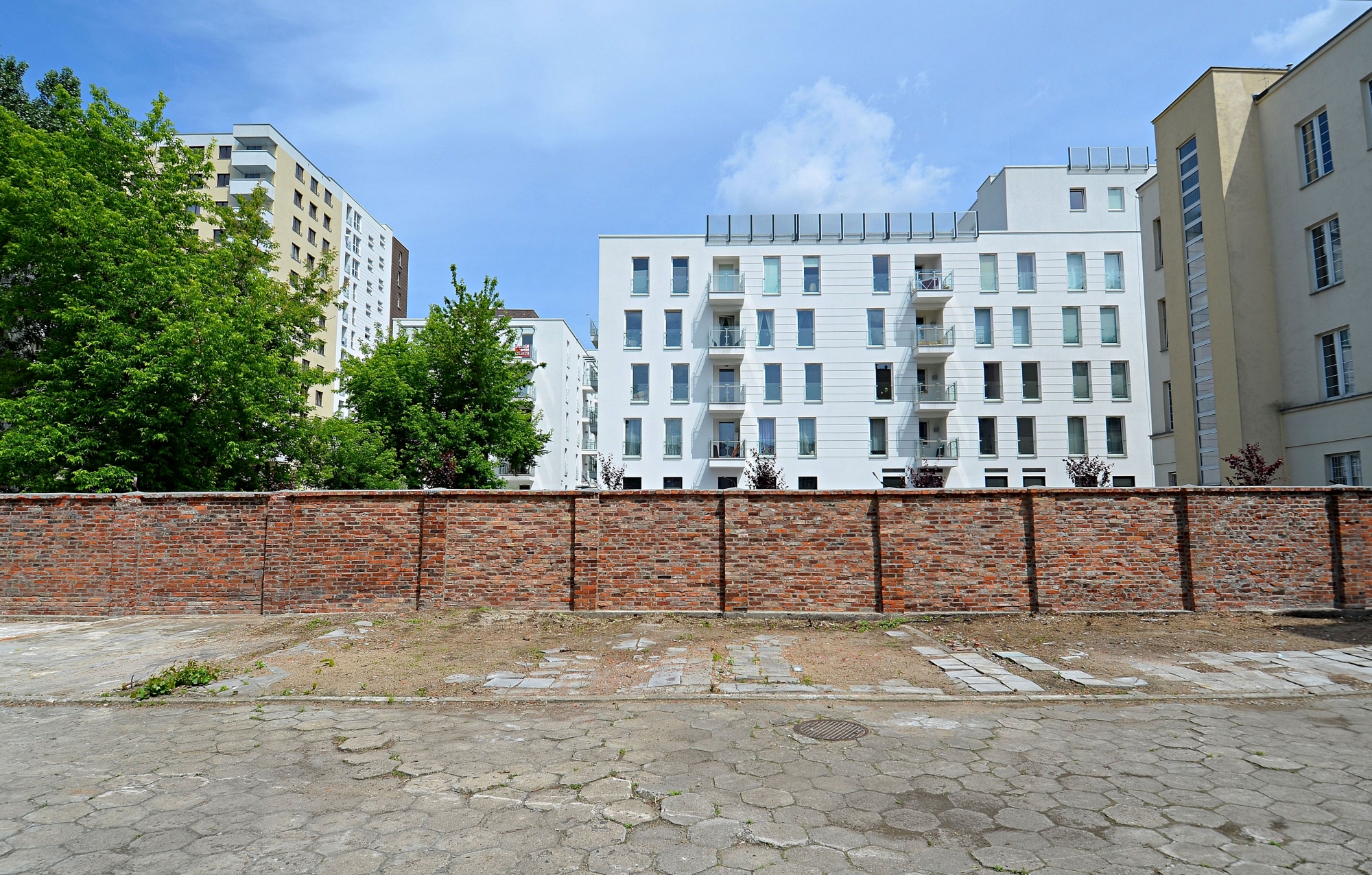
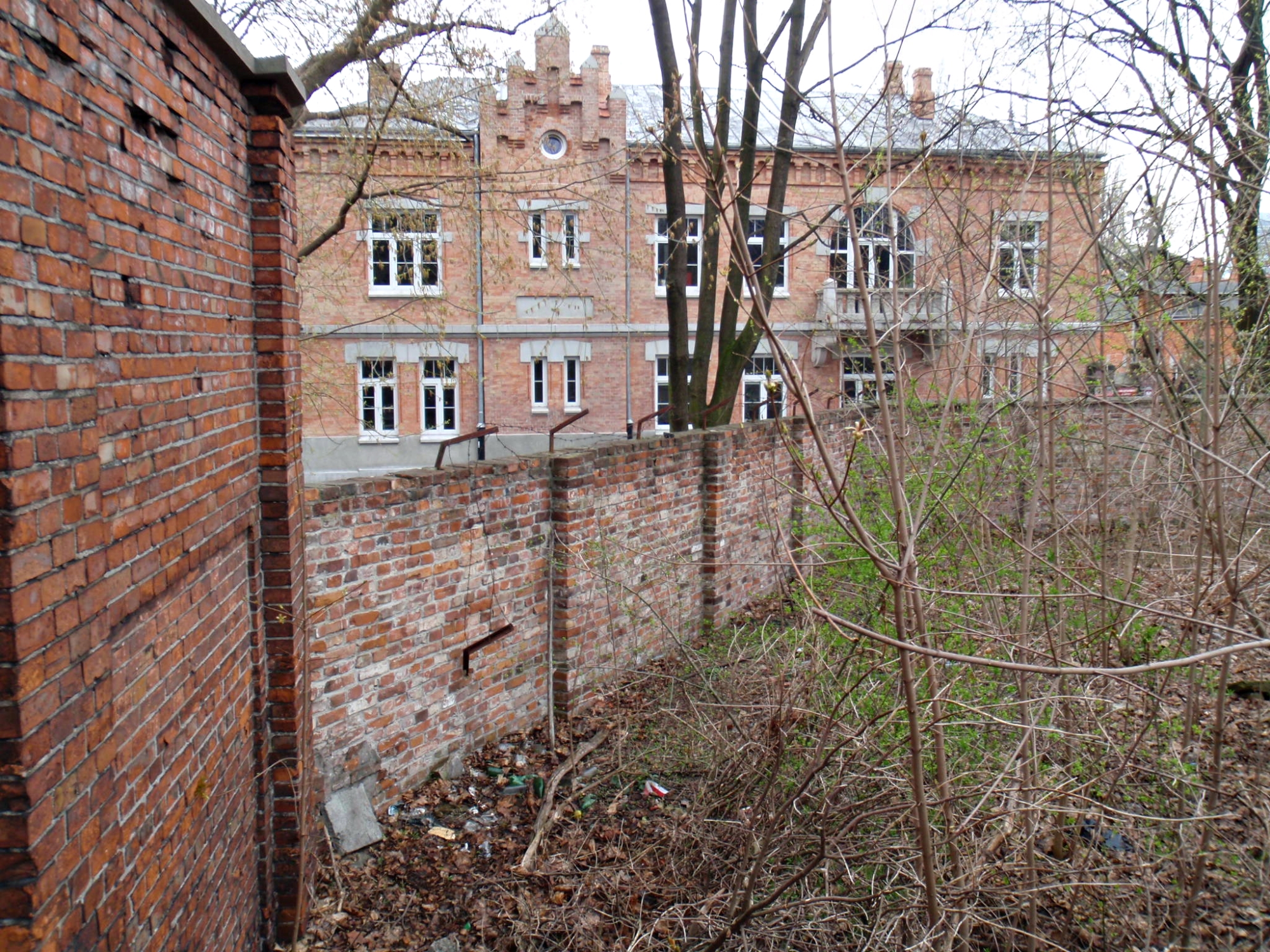
The isolated district was also marked by the walls of some tenements, such as at 41 Chłodna St. In addition, the ghetto gate No. 2 was located next to the building. We wrote about the tenement HERE.
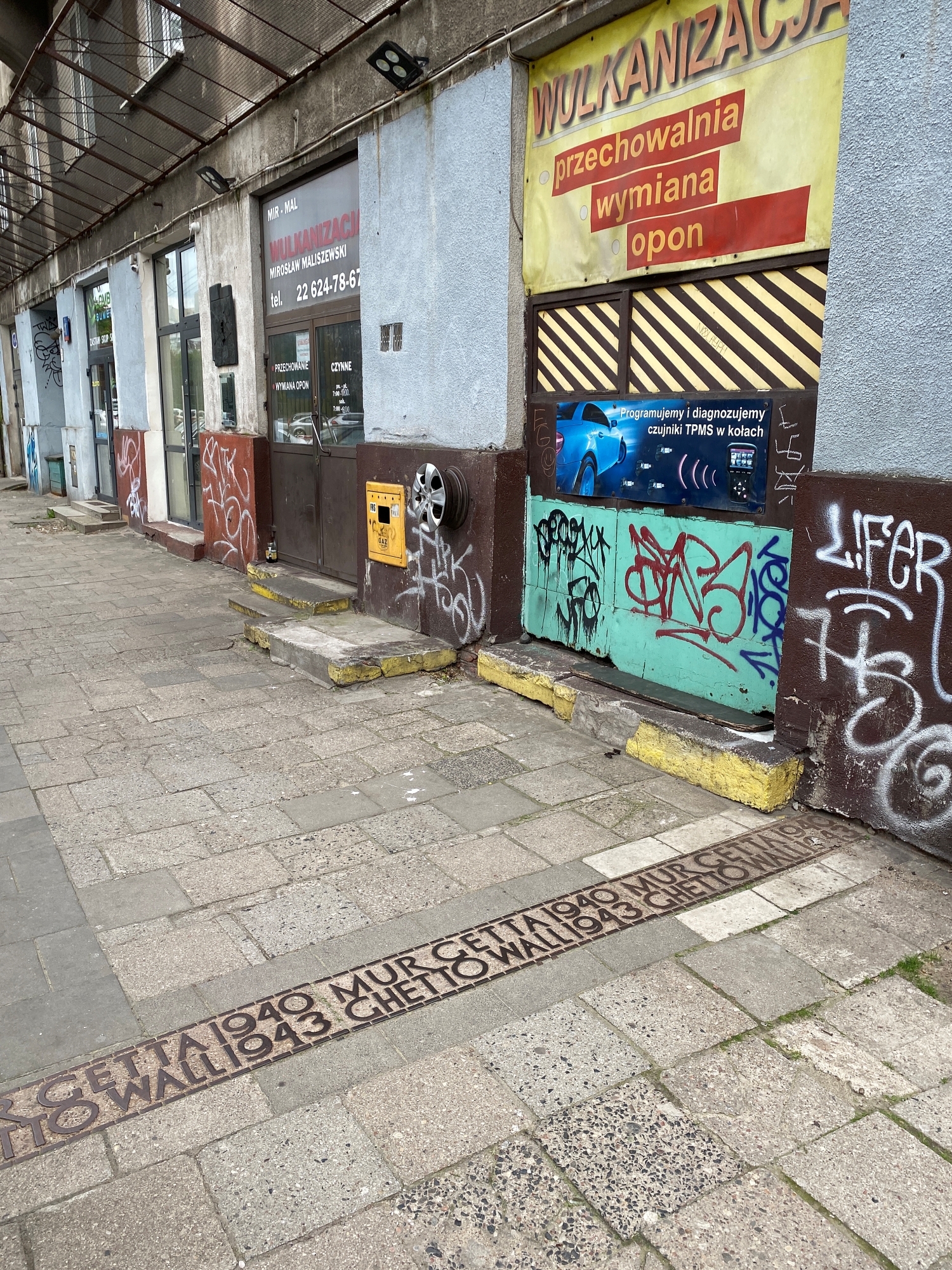
The year 1941, ghetto gate No. 2 to the Warsaw ghetto and the same place today. On the right, the tenement house at 41 Chłodna St. Photo: Central Judaica Database http://judaika.polin.pl/dmuseion and whiteMAD/Mateusz Markowski
In 1939, Warsaw had the largest Jewish population in the world, just after New York. The German occupation brought an end to their existence. Hundreds of thousands of children, old people, women and men were forcibly crowded into the ghetto. Its total number of victims is estimated at around 400,000 people, of whom around 92,000 died or died in Warsaw (mainly victims of starvation and disease), and around 300,000 in the Treblinka extermination camp and during two displacement actions. The Warsaw Ghetto was the largest of all those established in occupied Europe, so the Ghetto Uprising of 19 April 1943 was the largest armed Jewish uprising during World War II. After the fighting ended on 16 May 1943, the entire area of the Jewish quarter was methodically burned and razed to the ground. Those who survived the fighting, the mass executions at the hands of the Germans and the fires were taken to extermination camps. However, individual Jews survived in the ruins, shelters and cellars and hid until the end of the German occupation in Warsaw. They were called ghetto robins. The ghetto area became a vast desert of rubble.
Because of its symbolic significance, the Warsaw Ghetto Uprising is considered by the Jewish people to be one of the most important events in their history. The fragmentary preserved walls of the ghetto are a unique, tragic reminder of those tragic events.
Source: sztetl.org.pl, um.warszawa.pl, gazetawoli.pl
Read also: Architecture in Poland | Monuments | History | Warsaw | Interesting facts
Subject: Warsaw Ghetto walls – a walk through the surviving fragments


